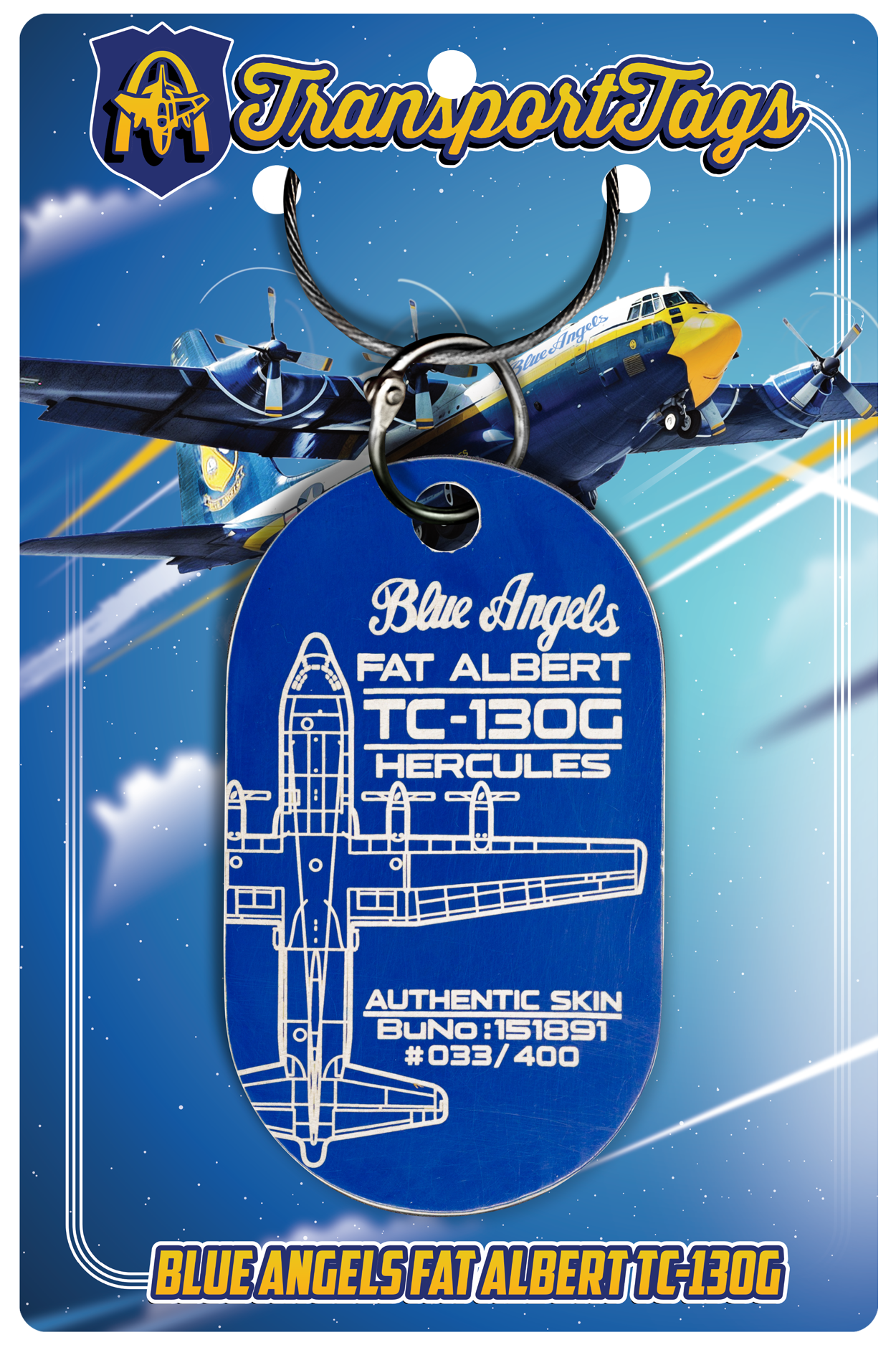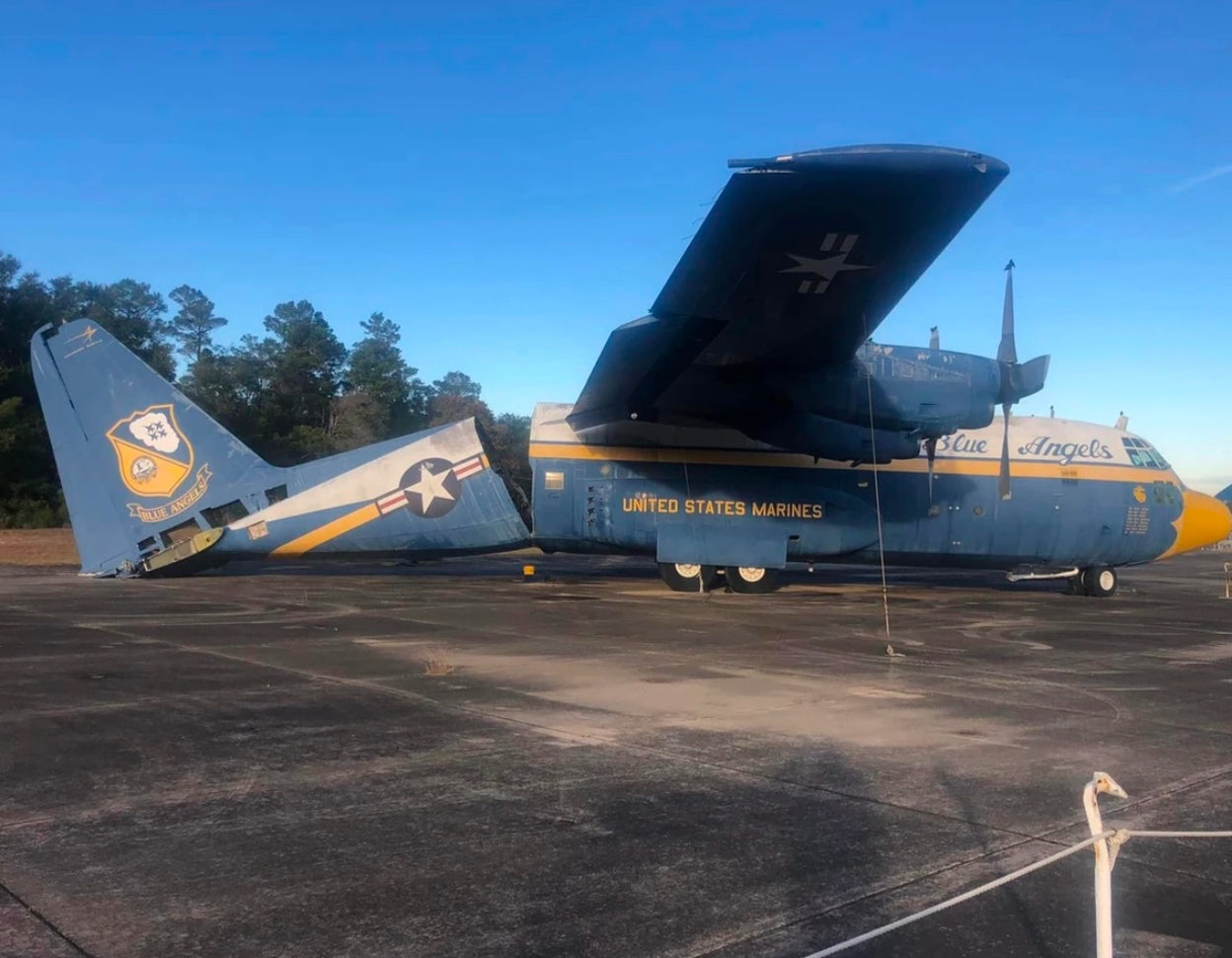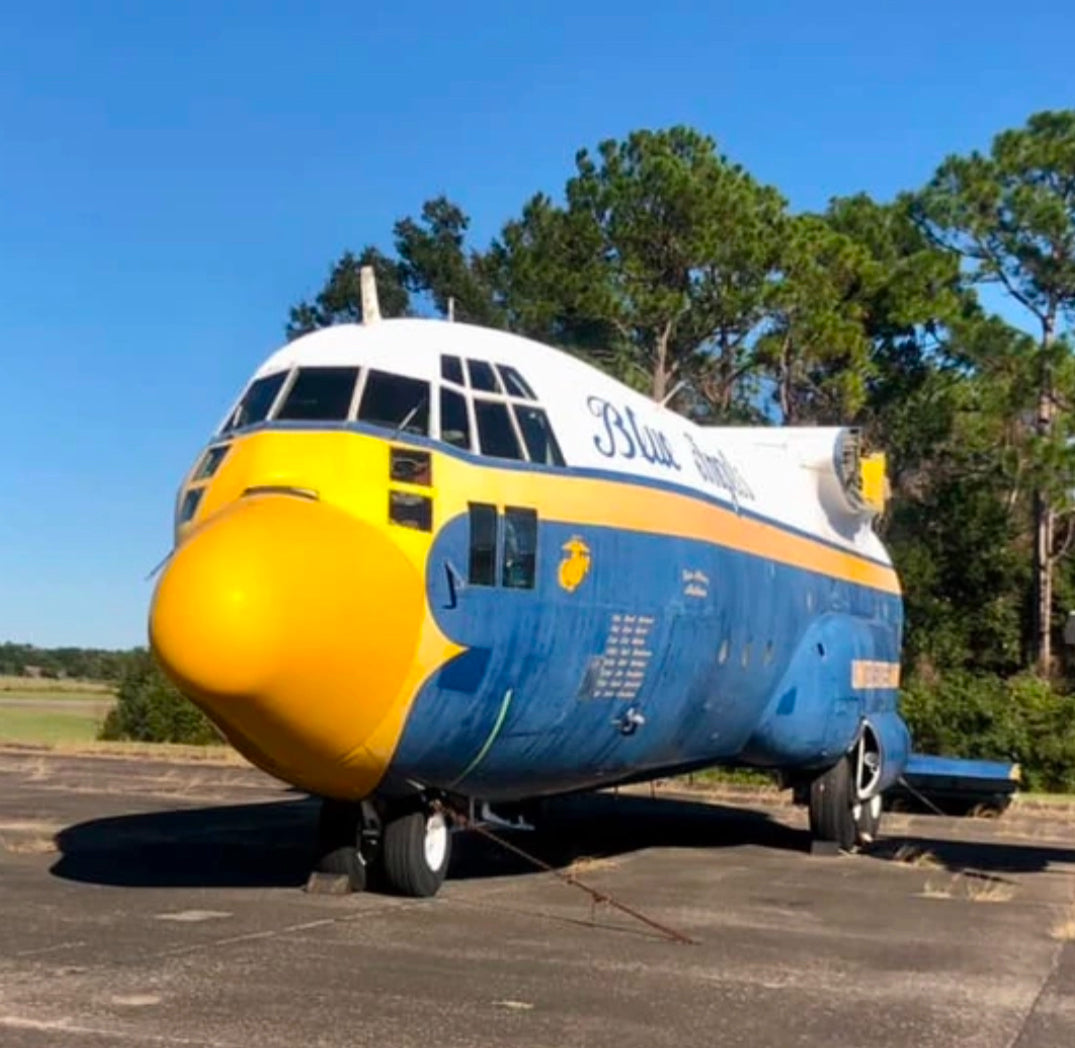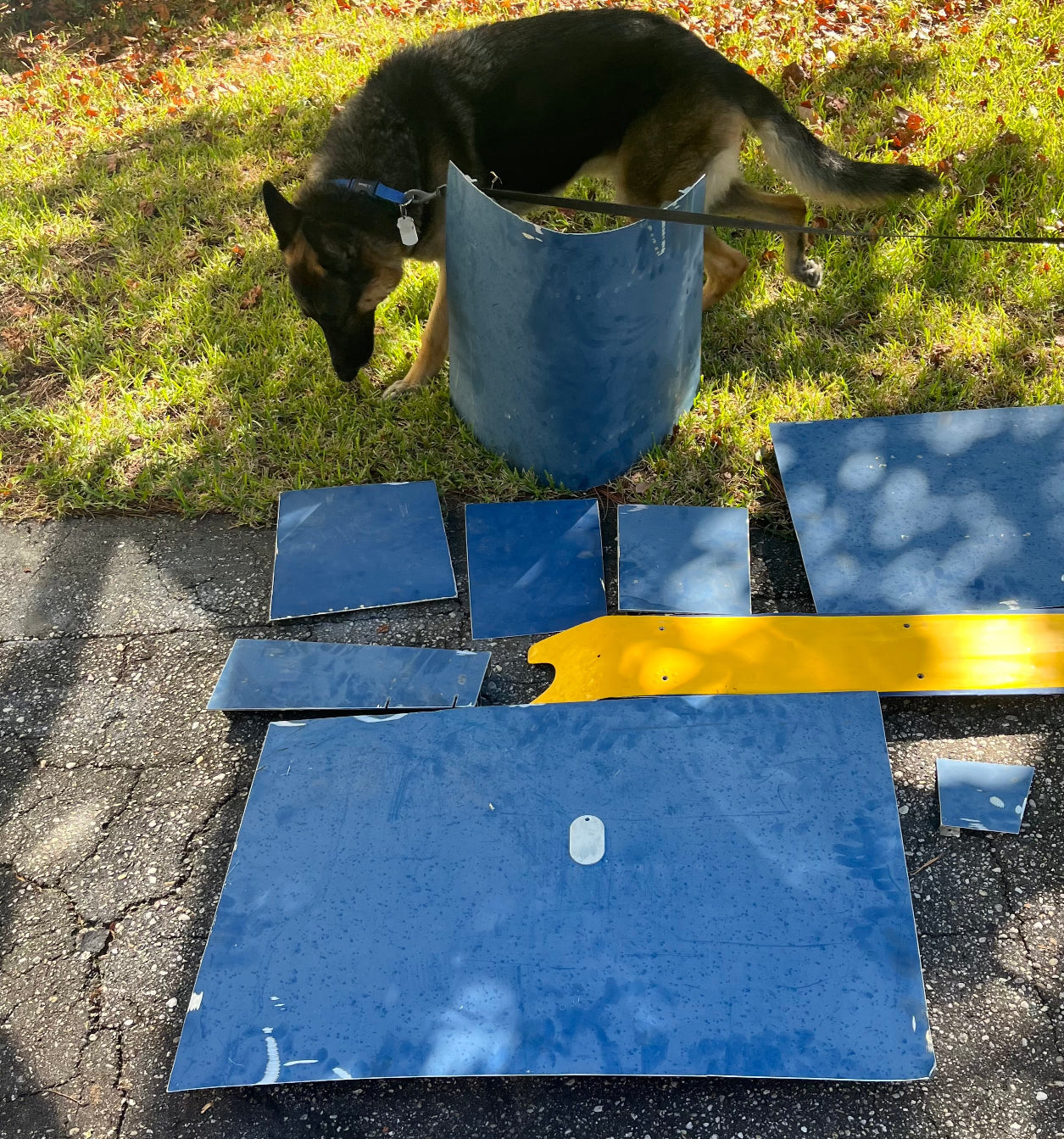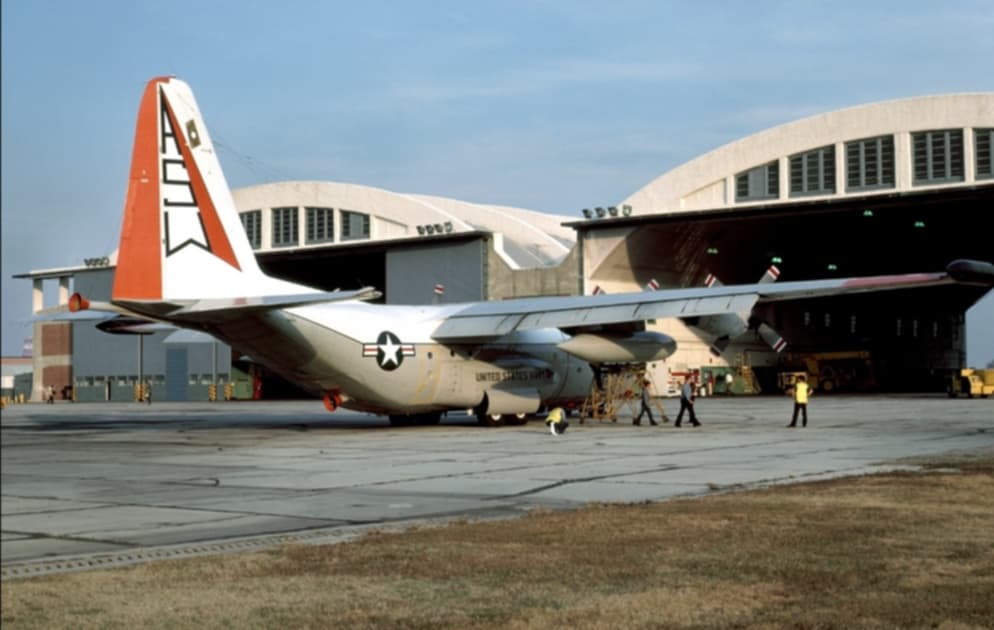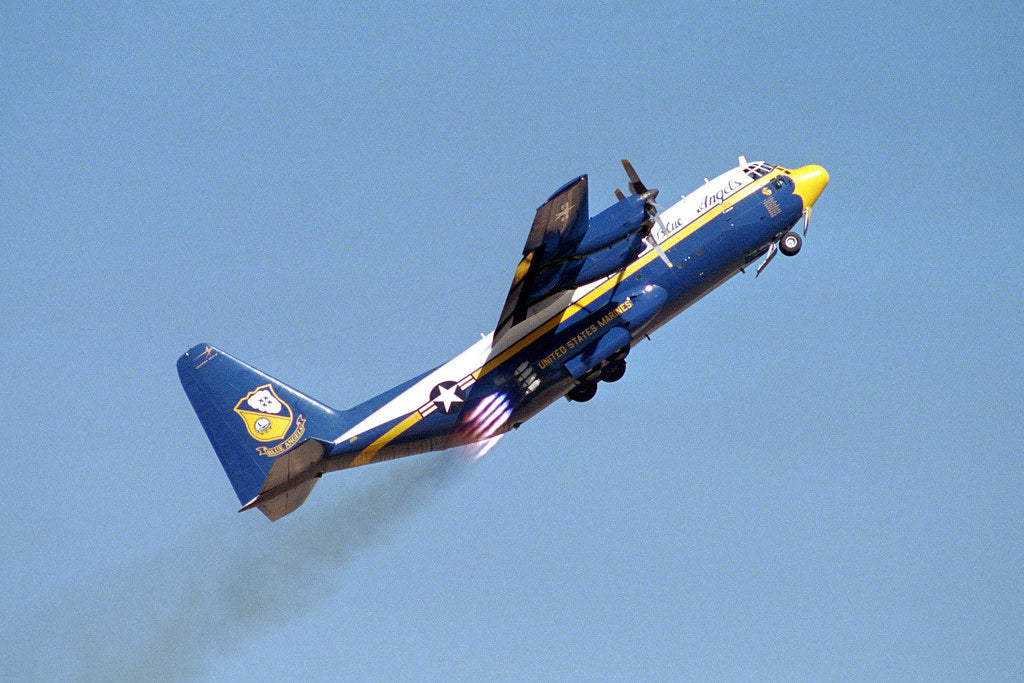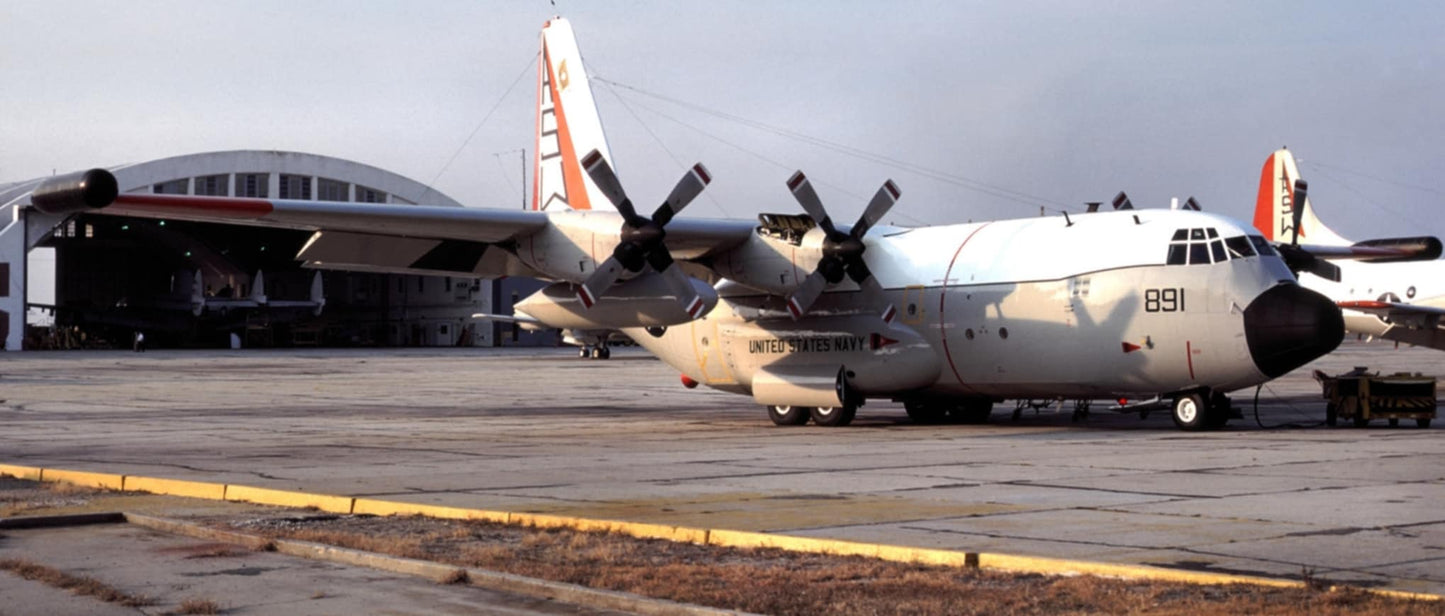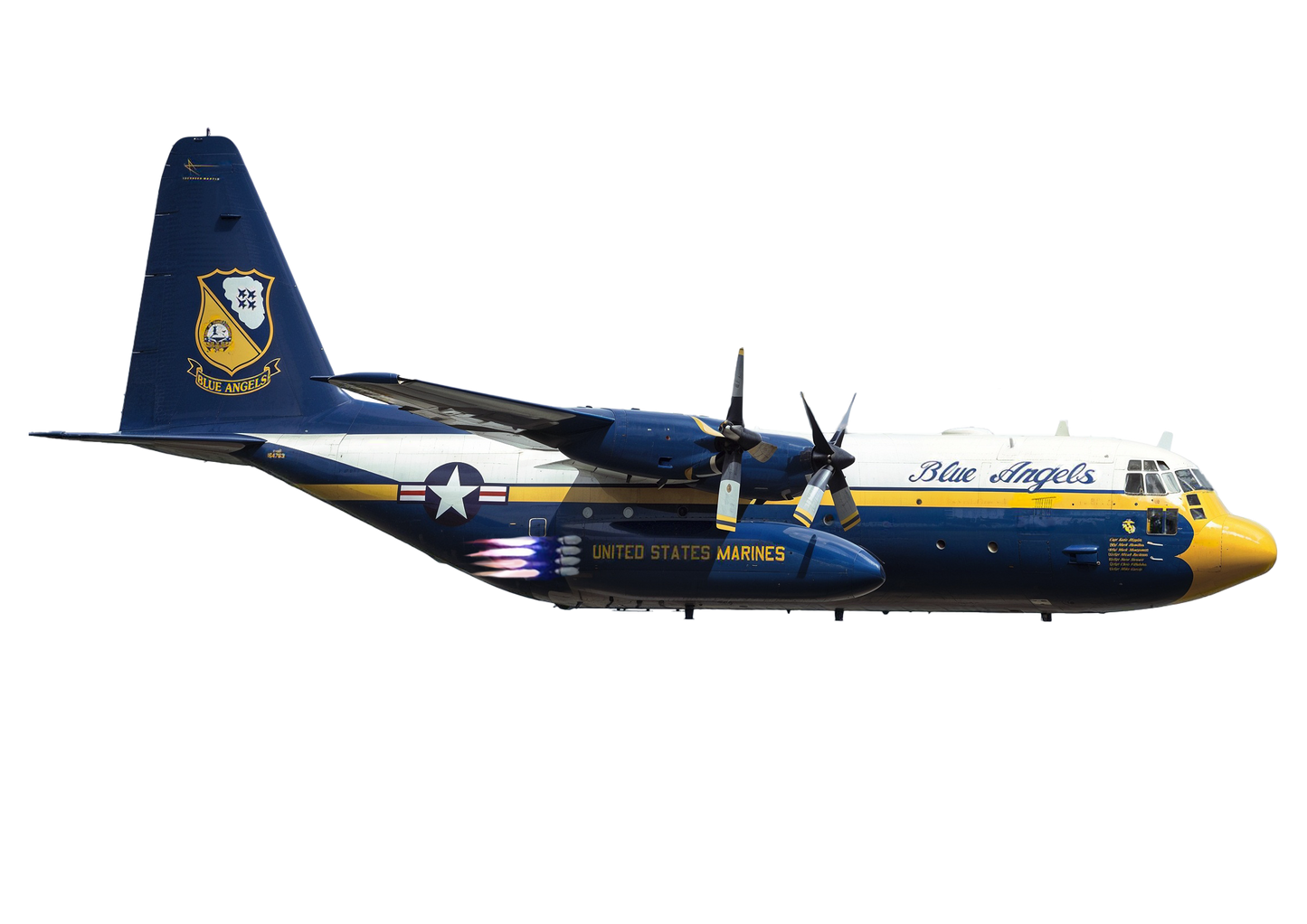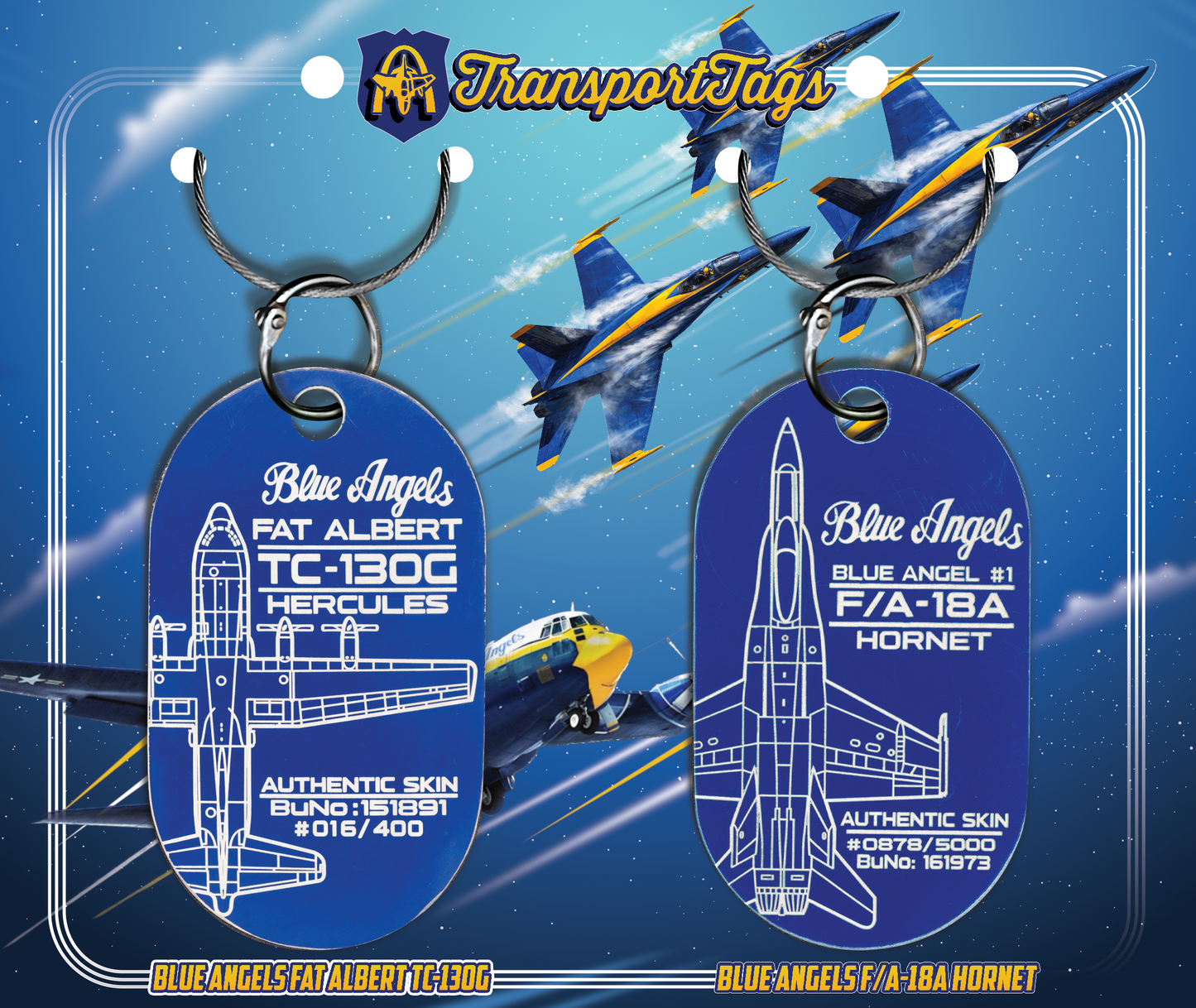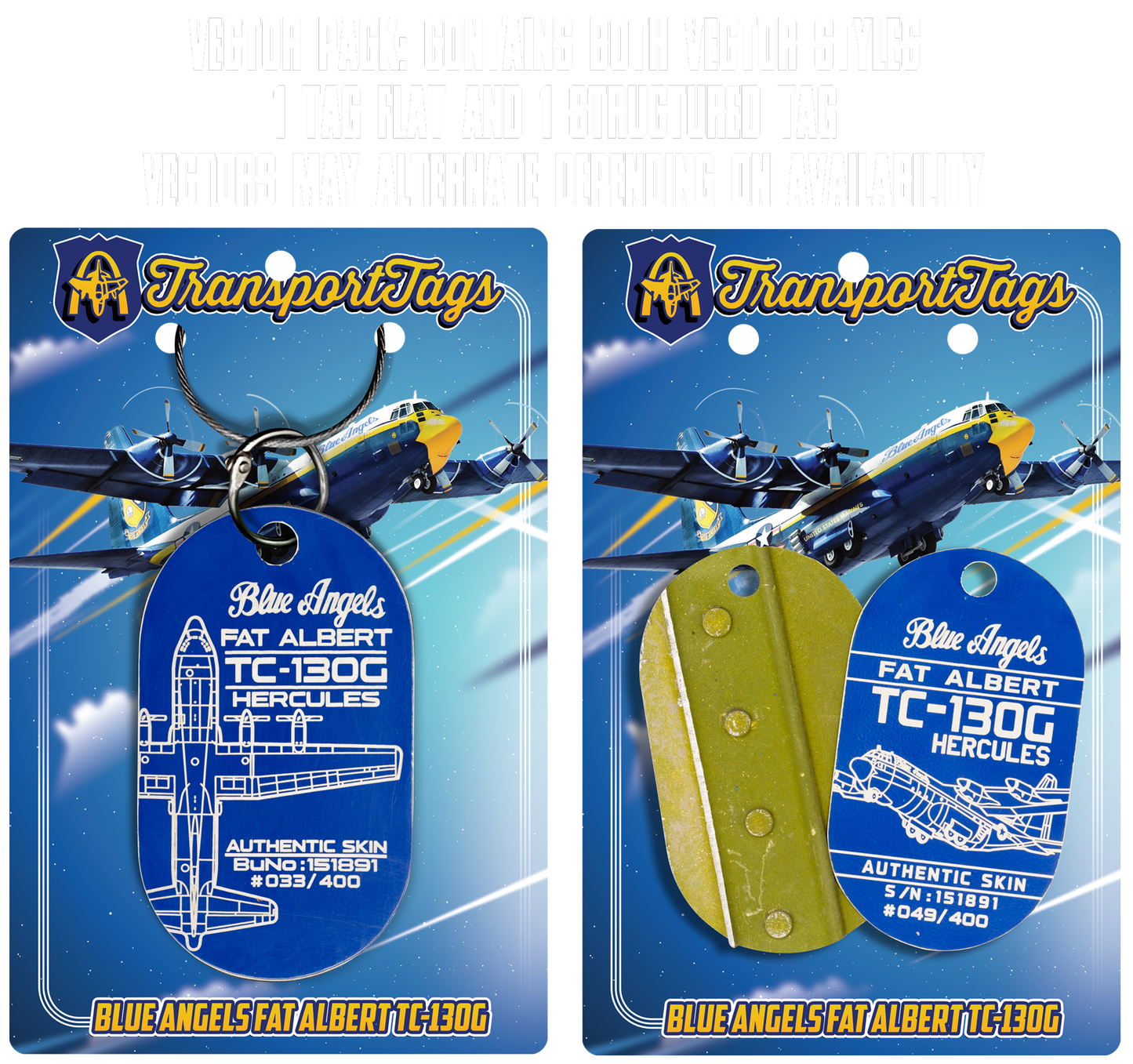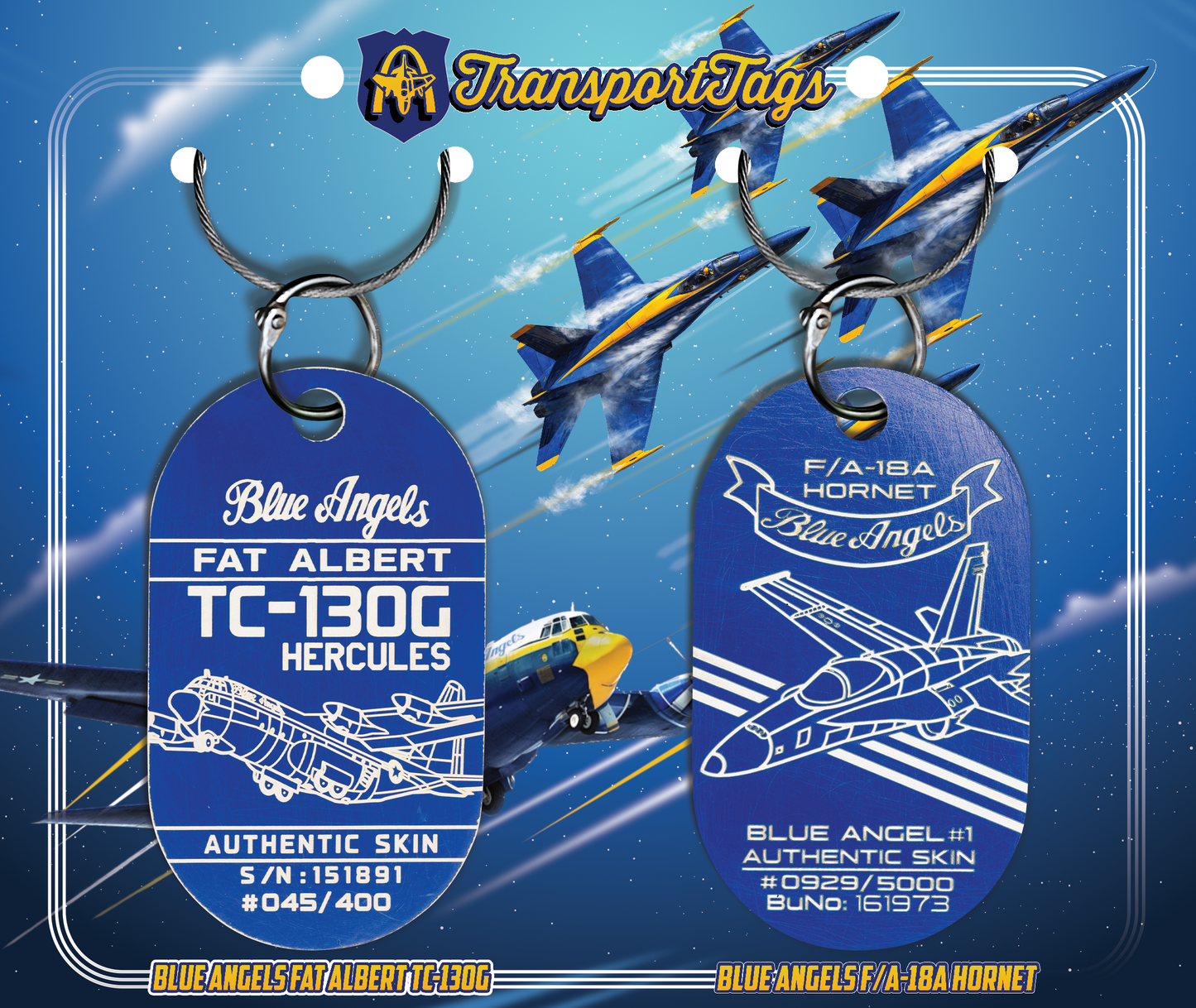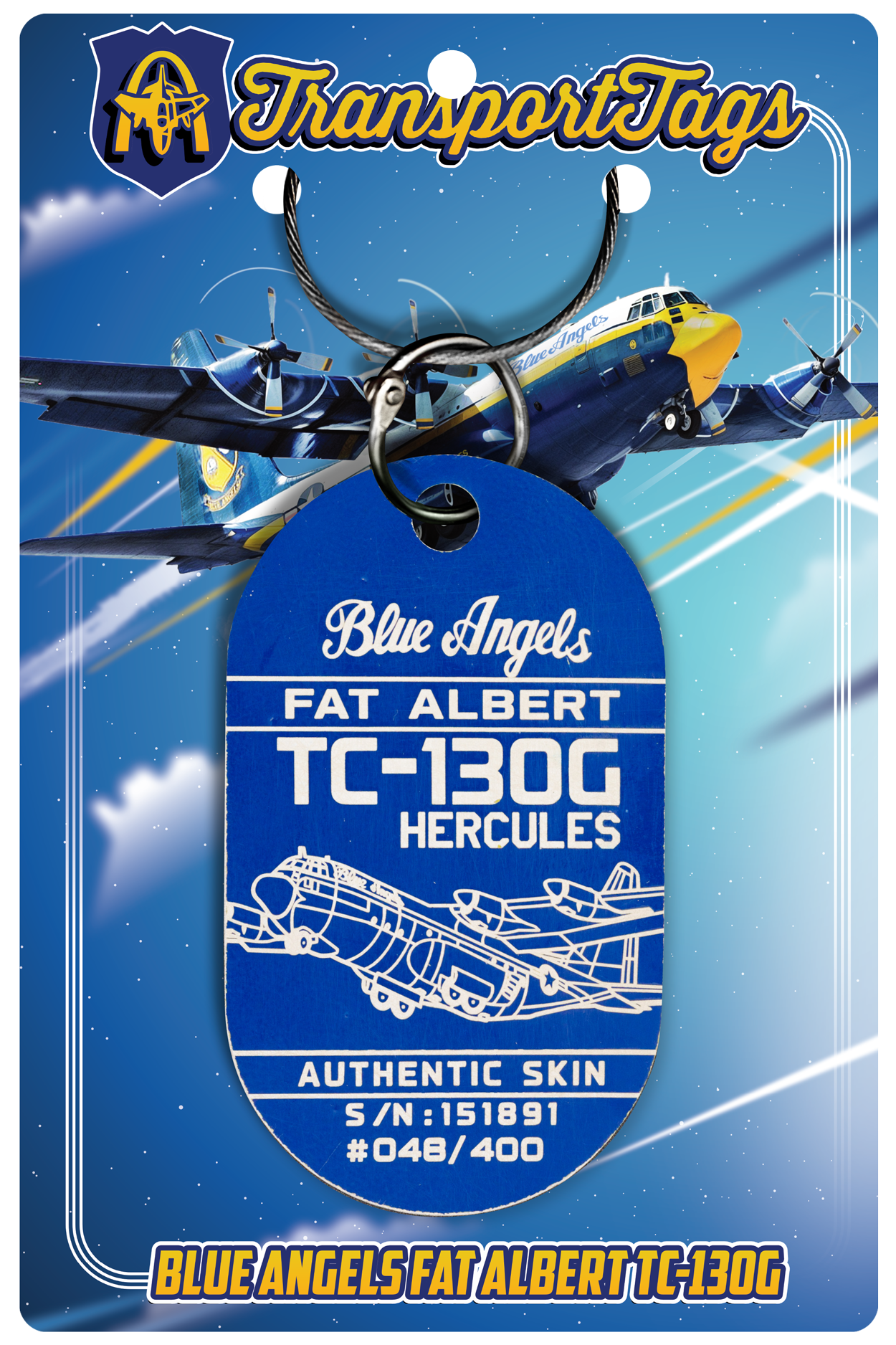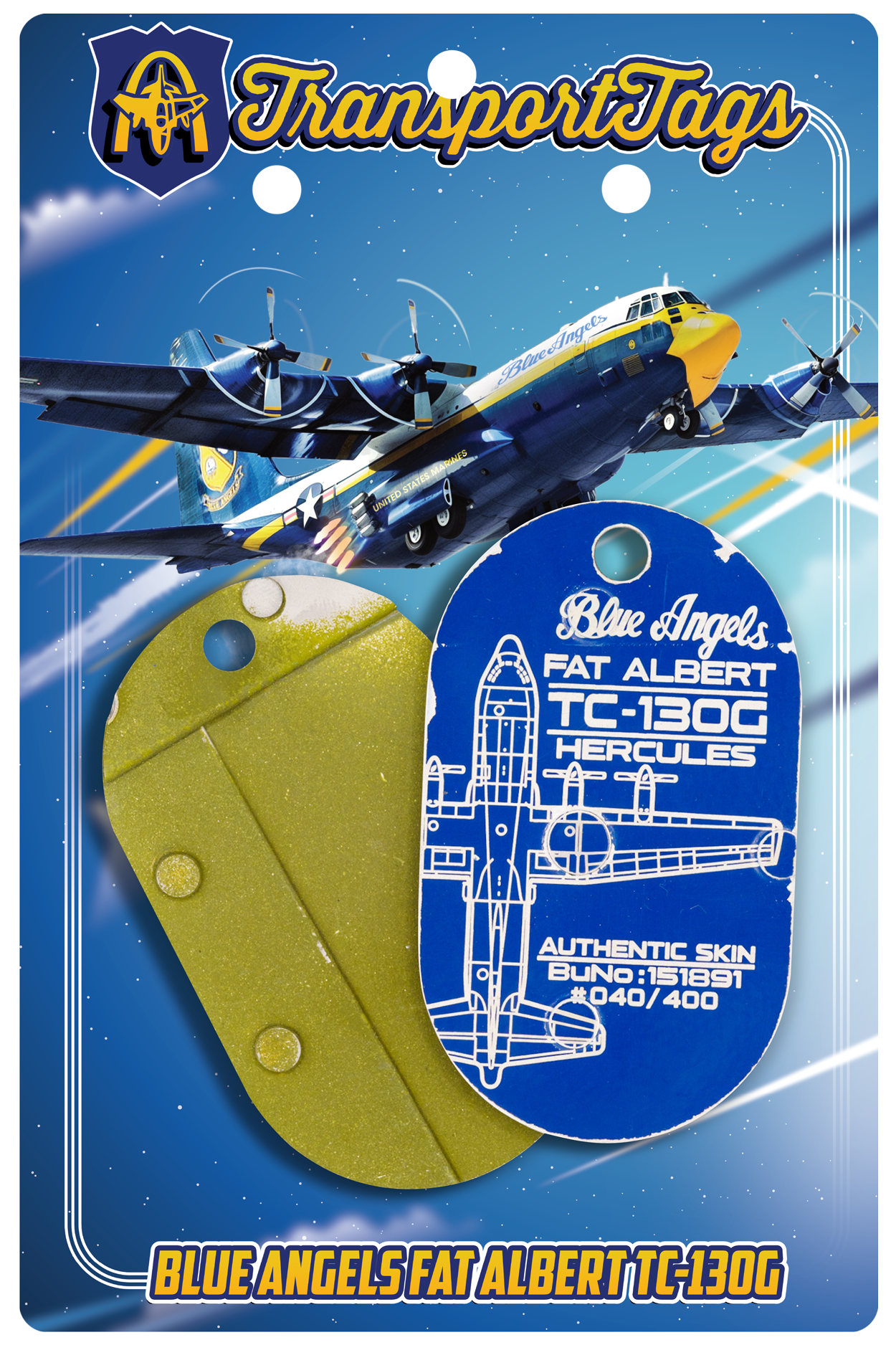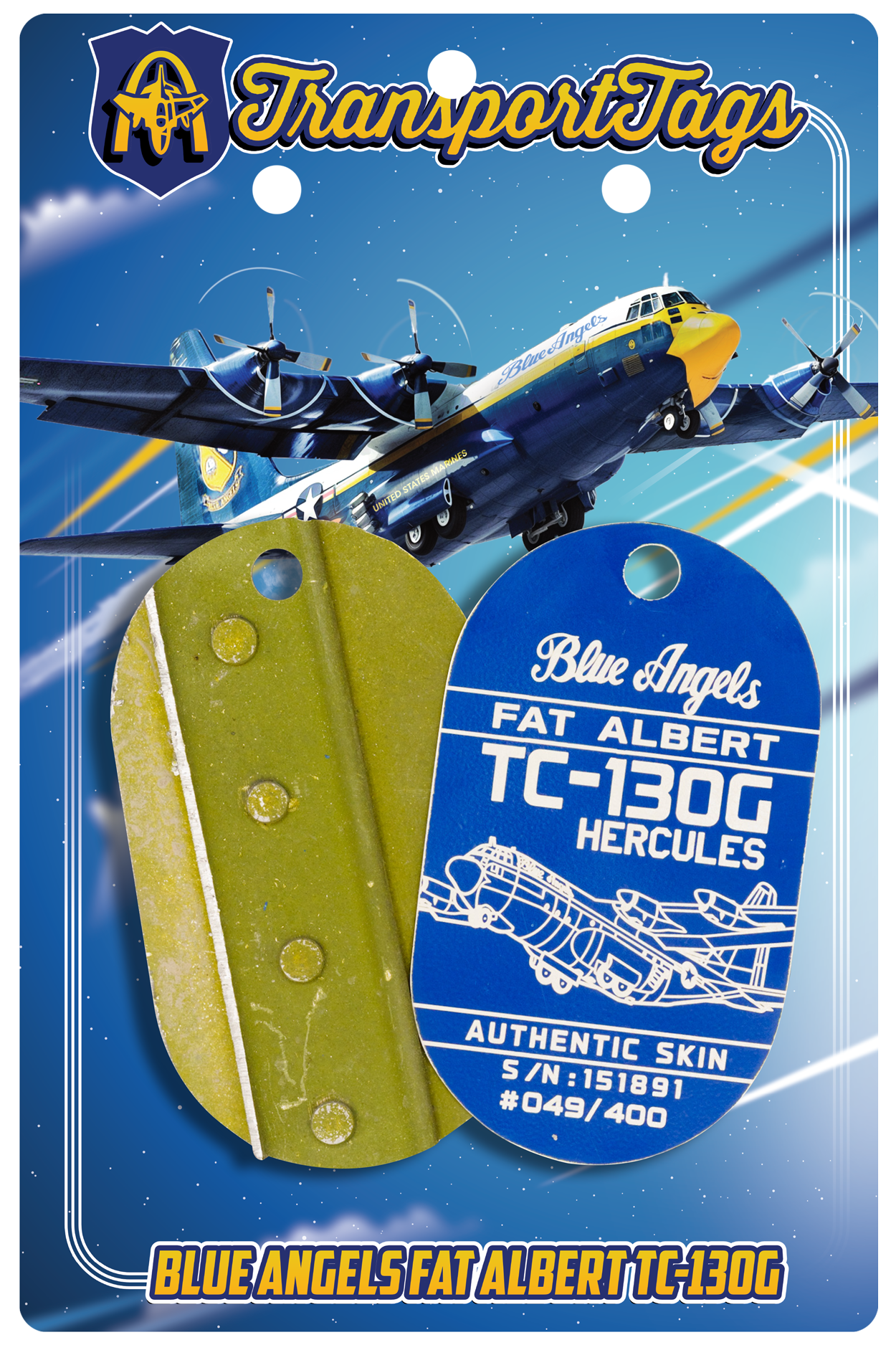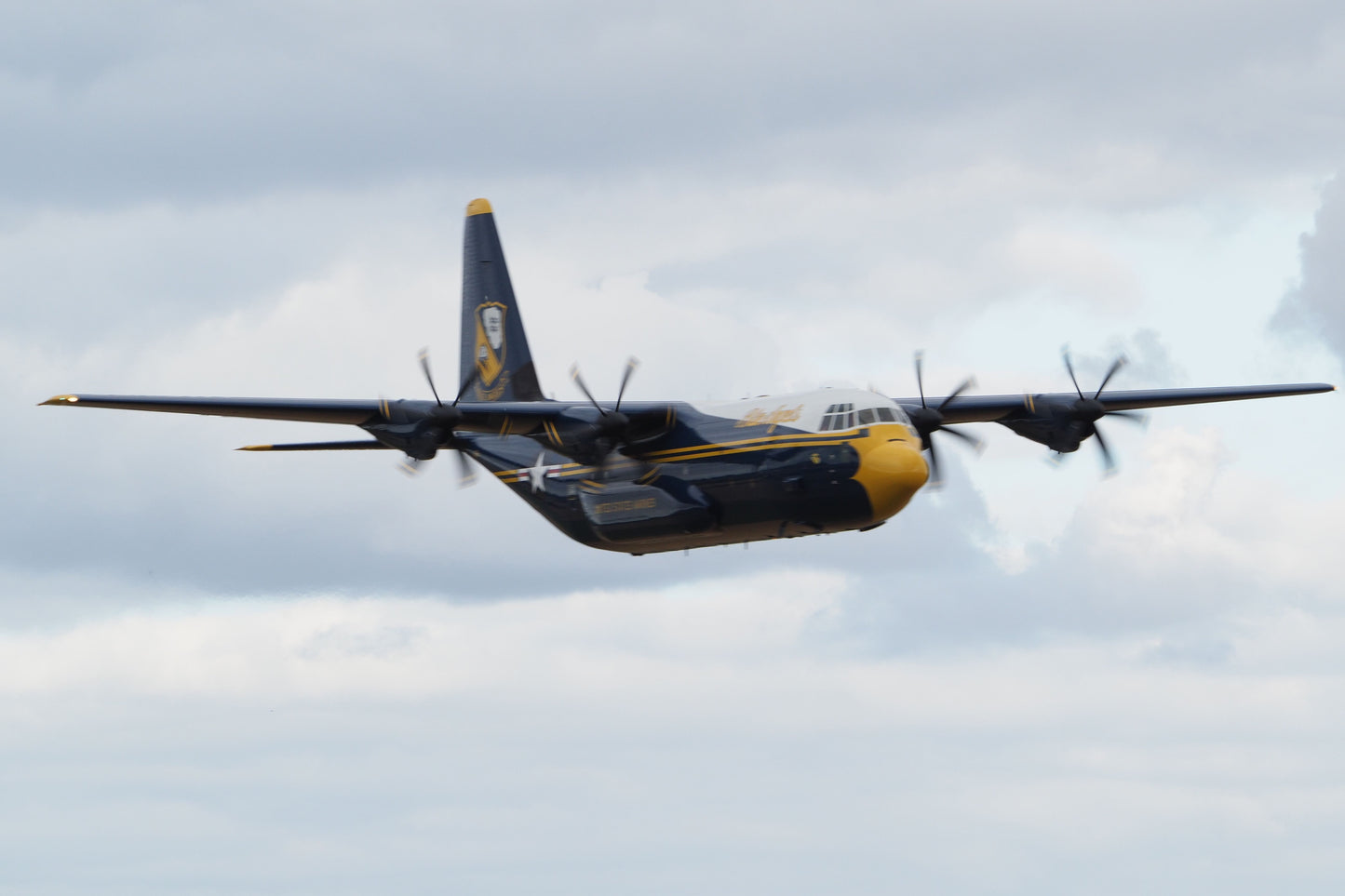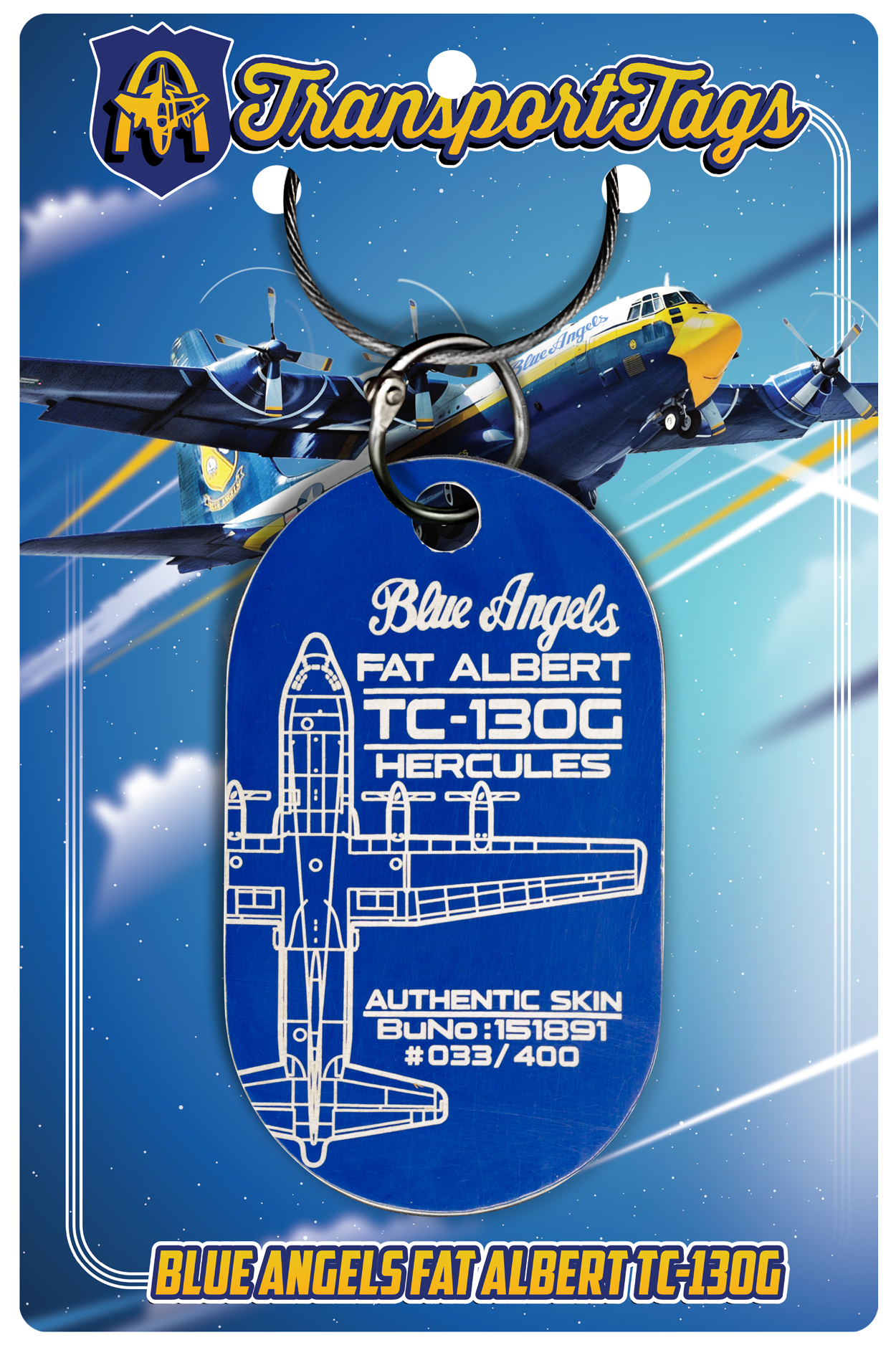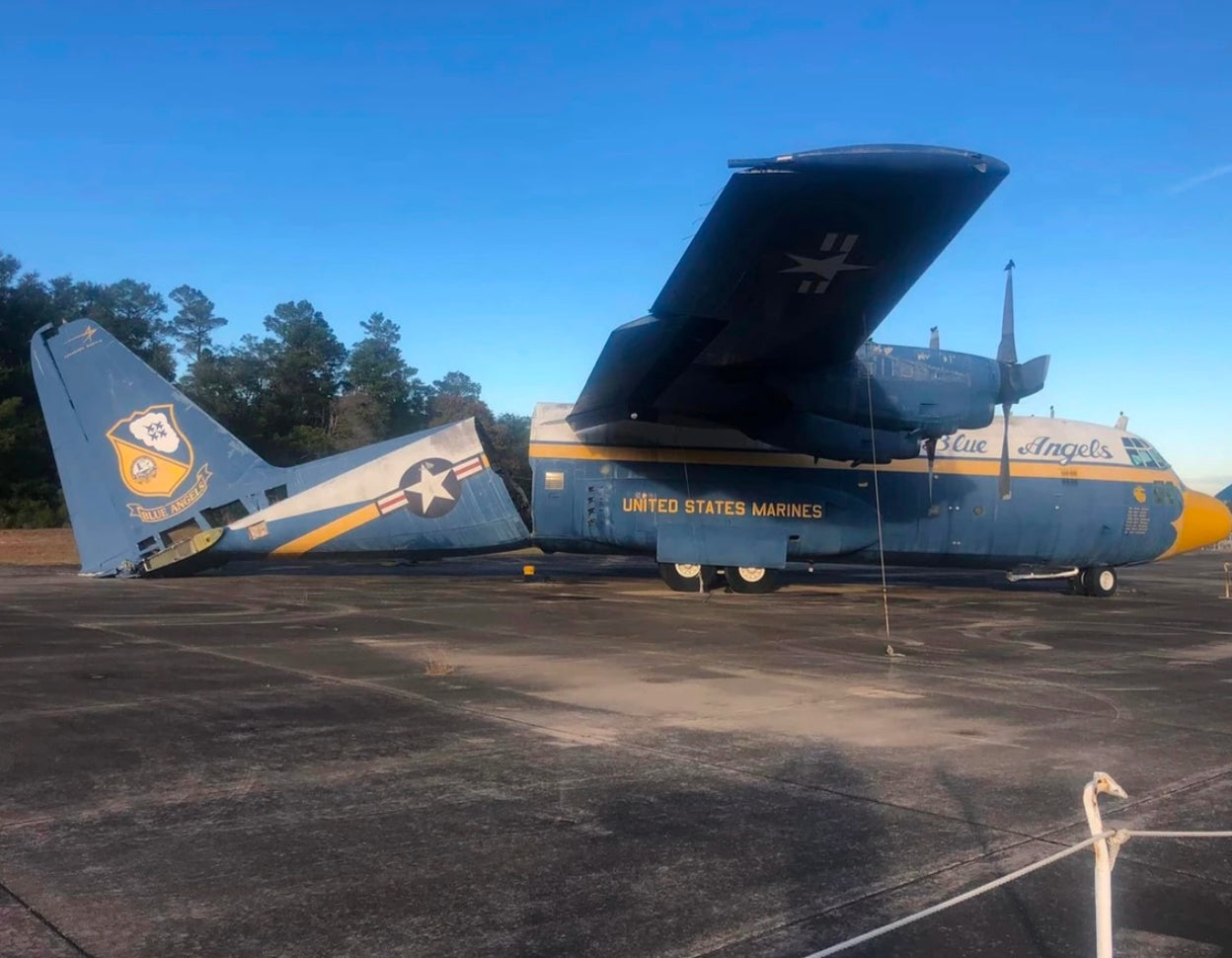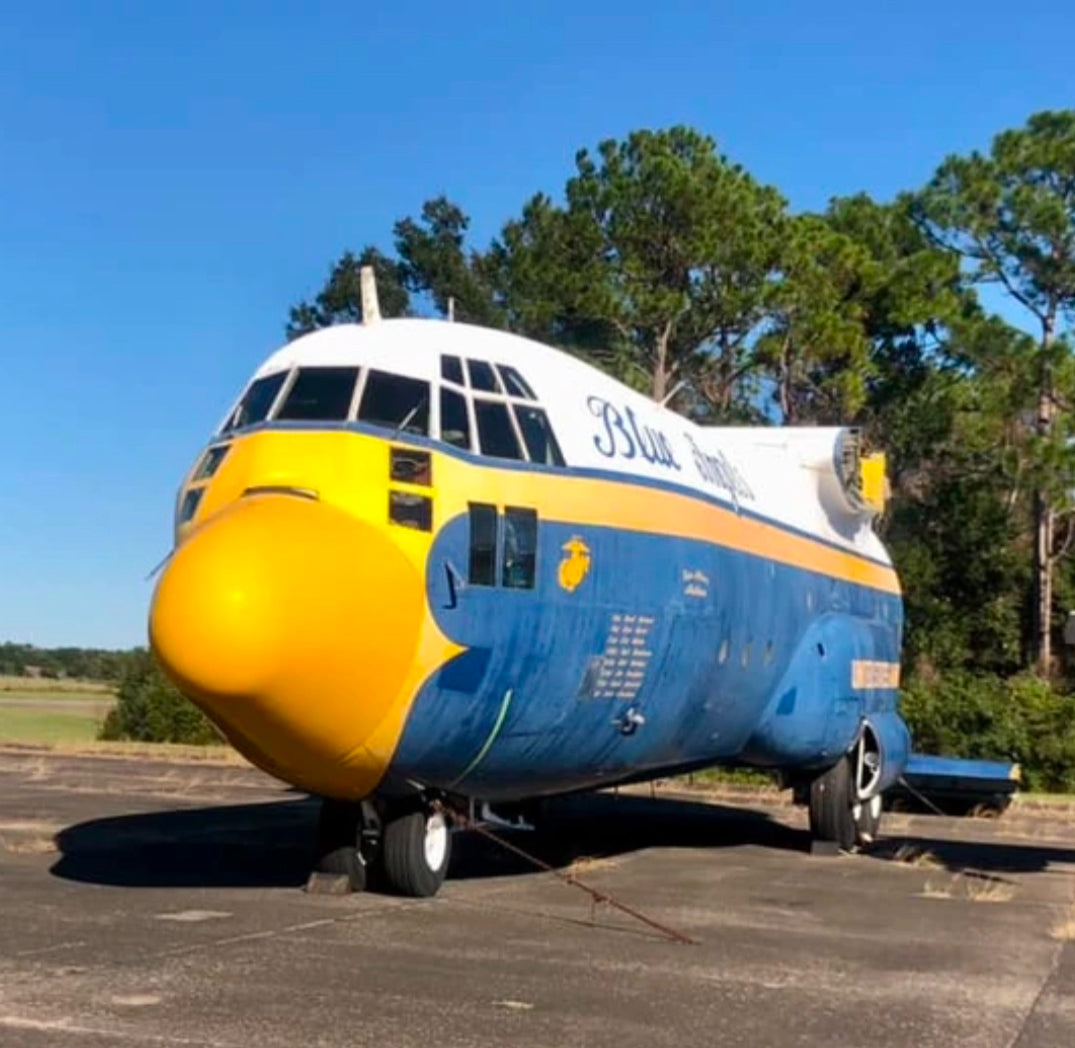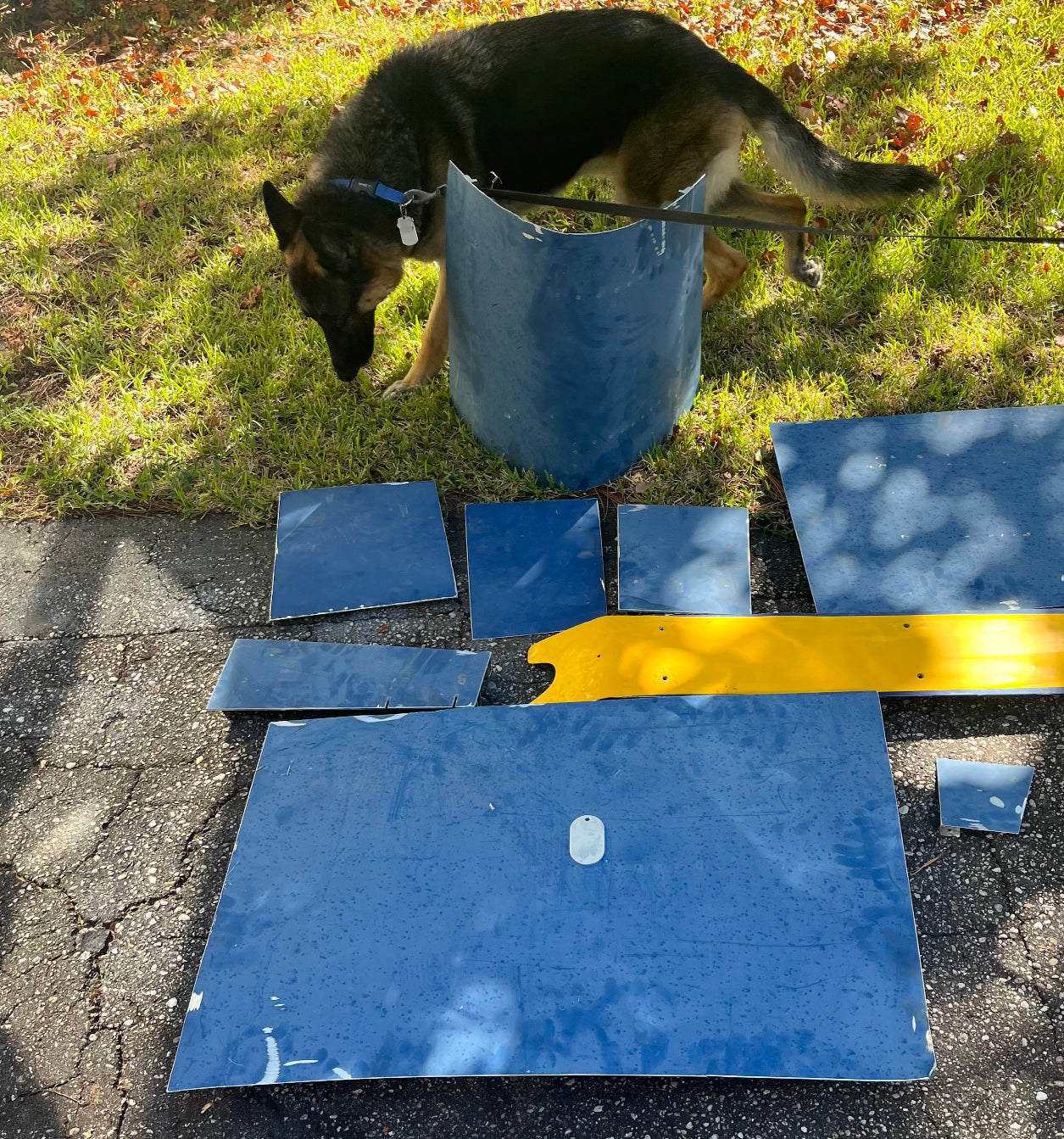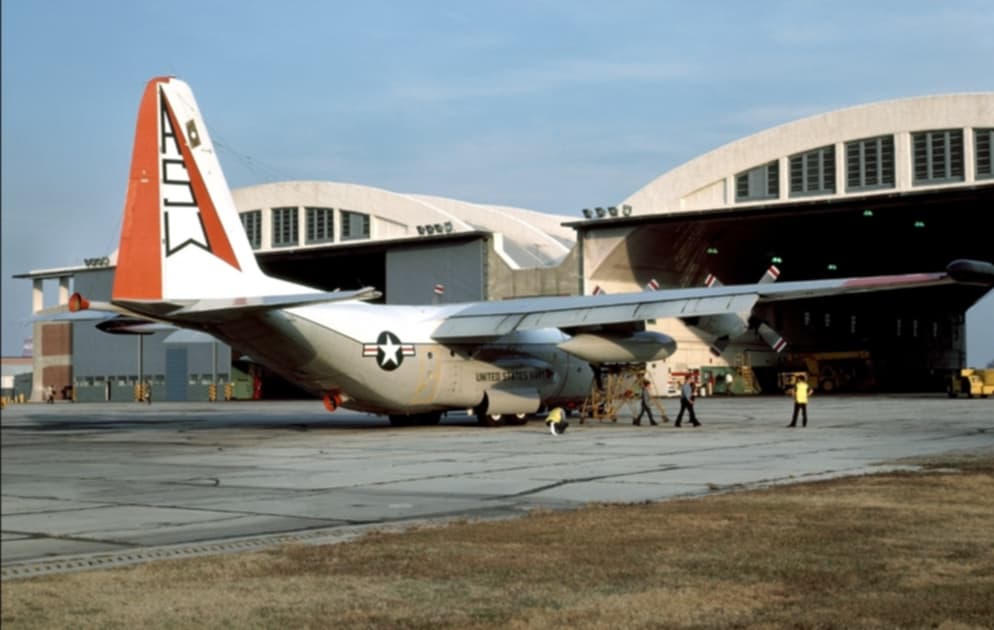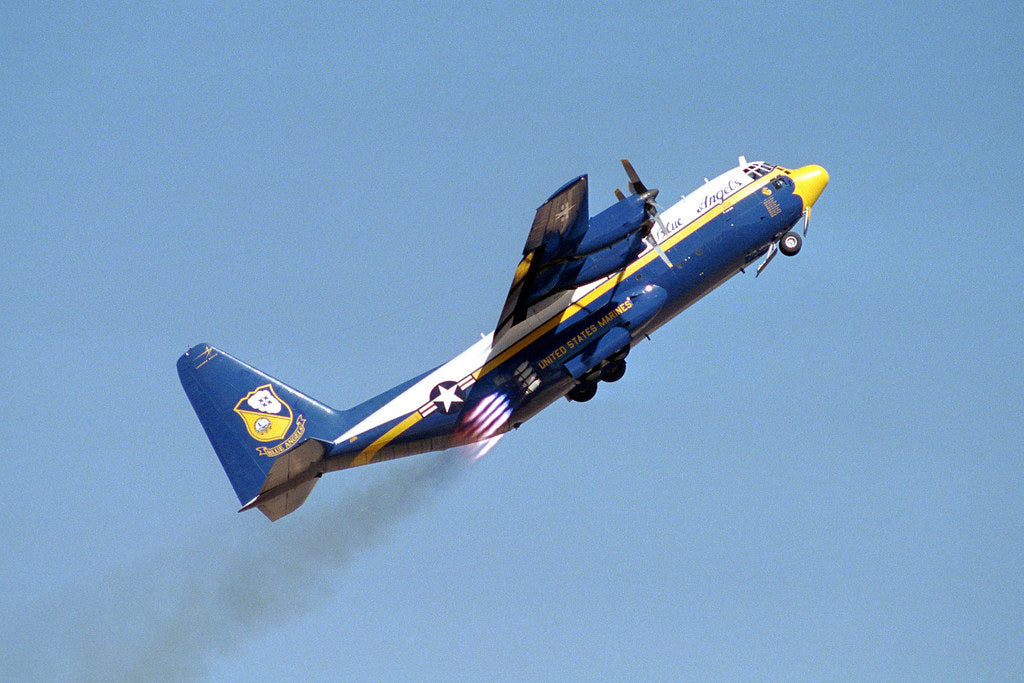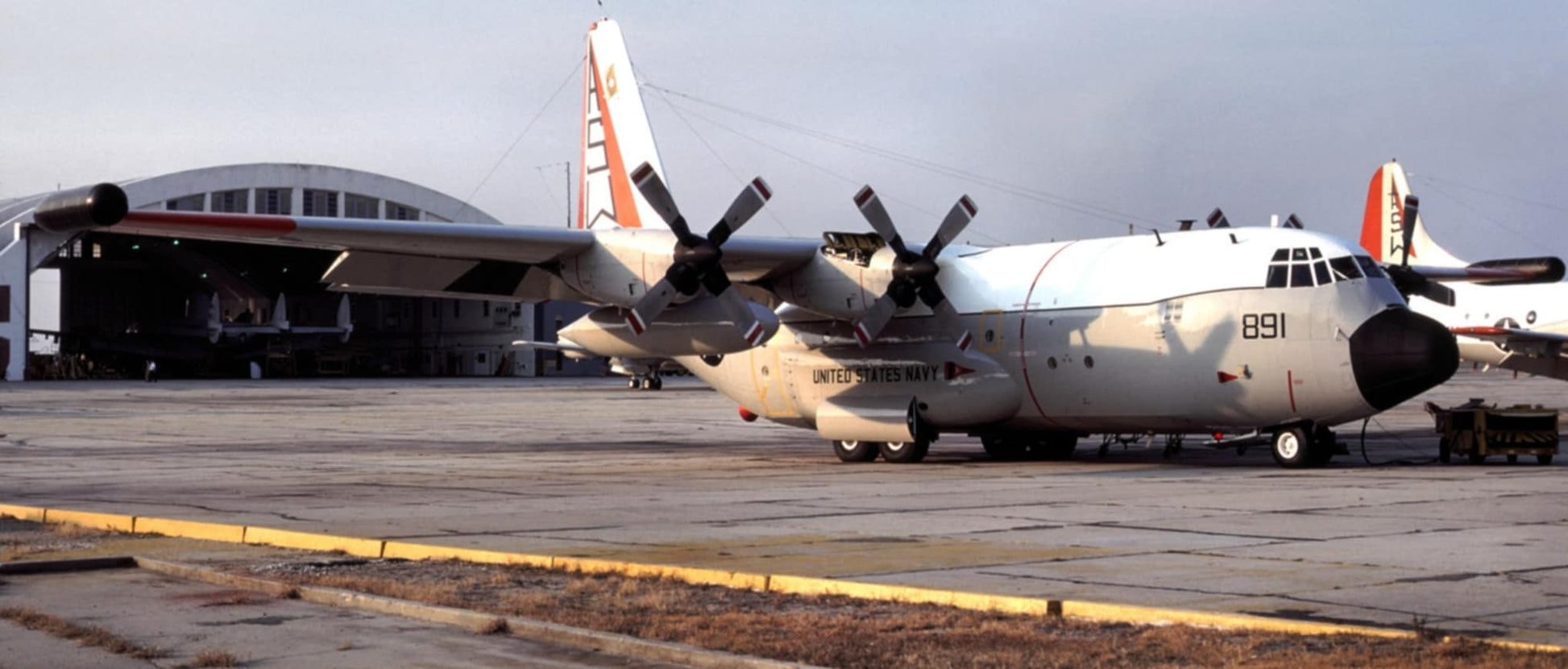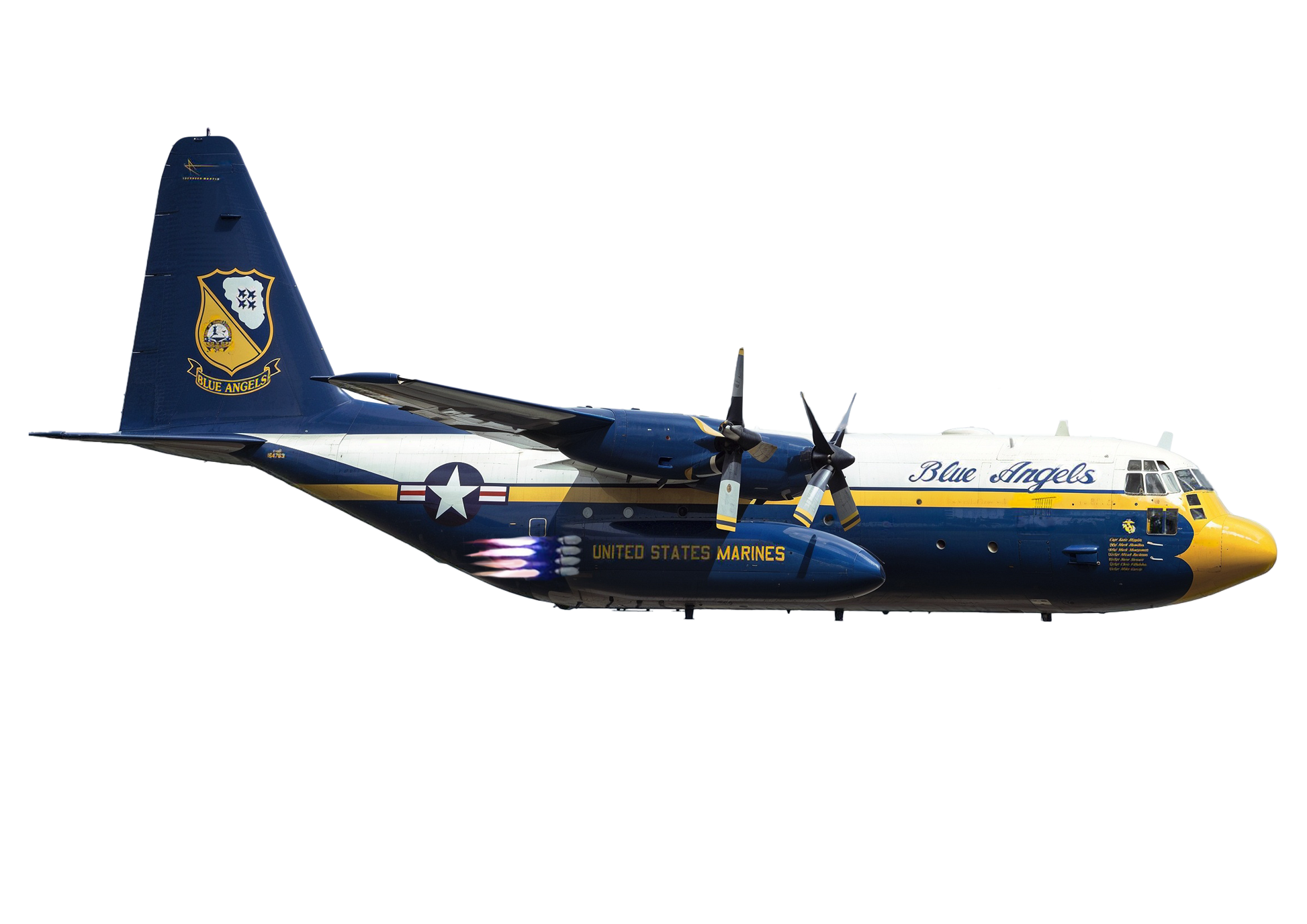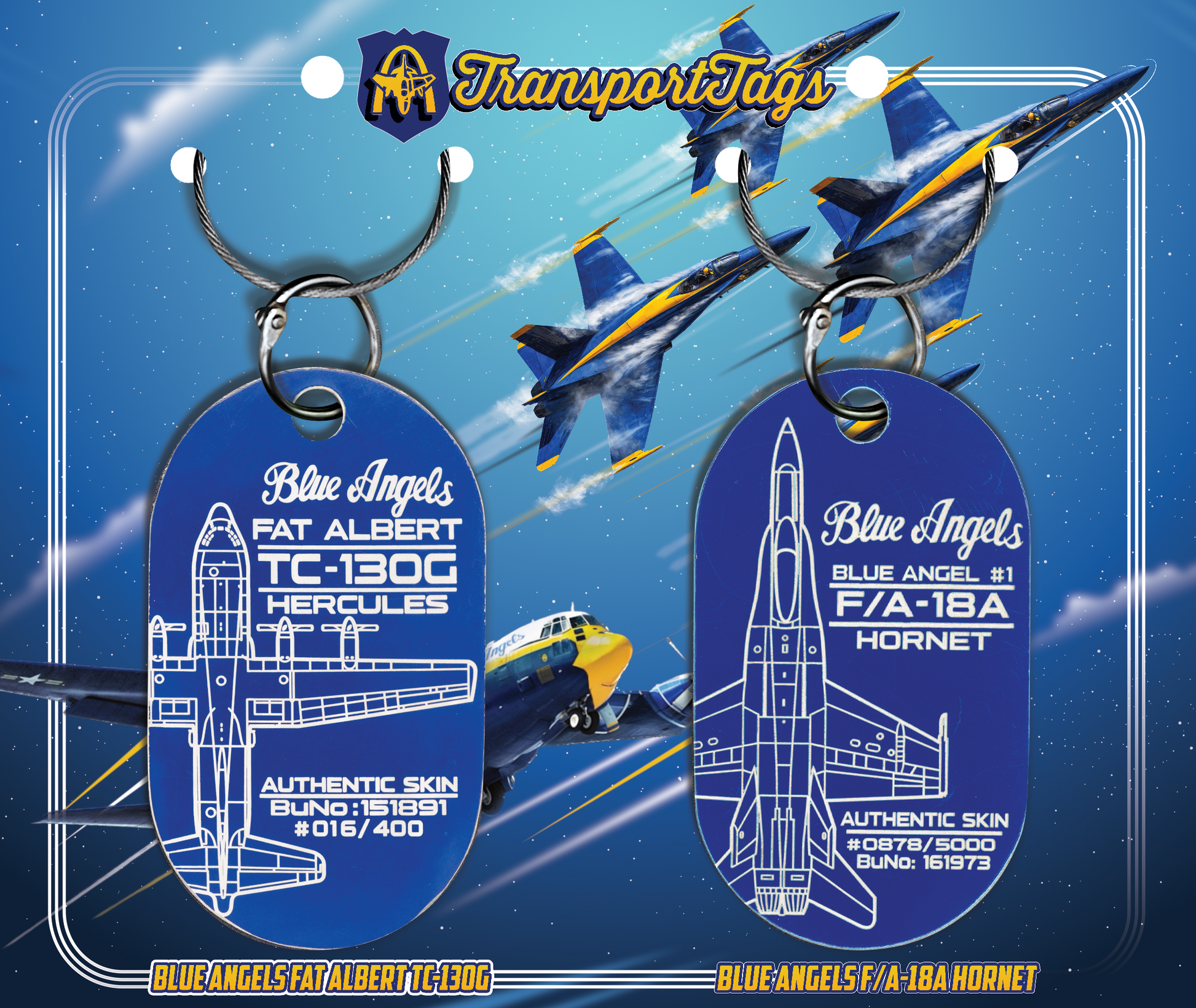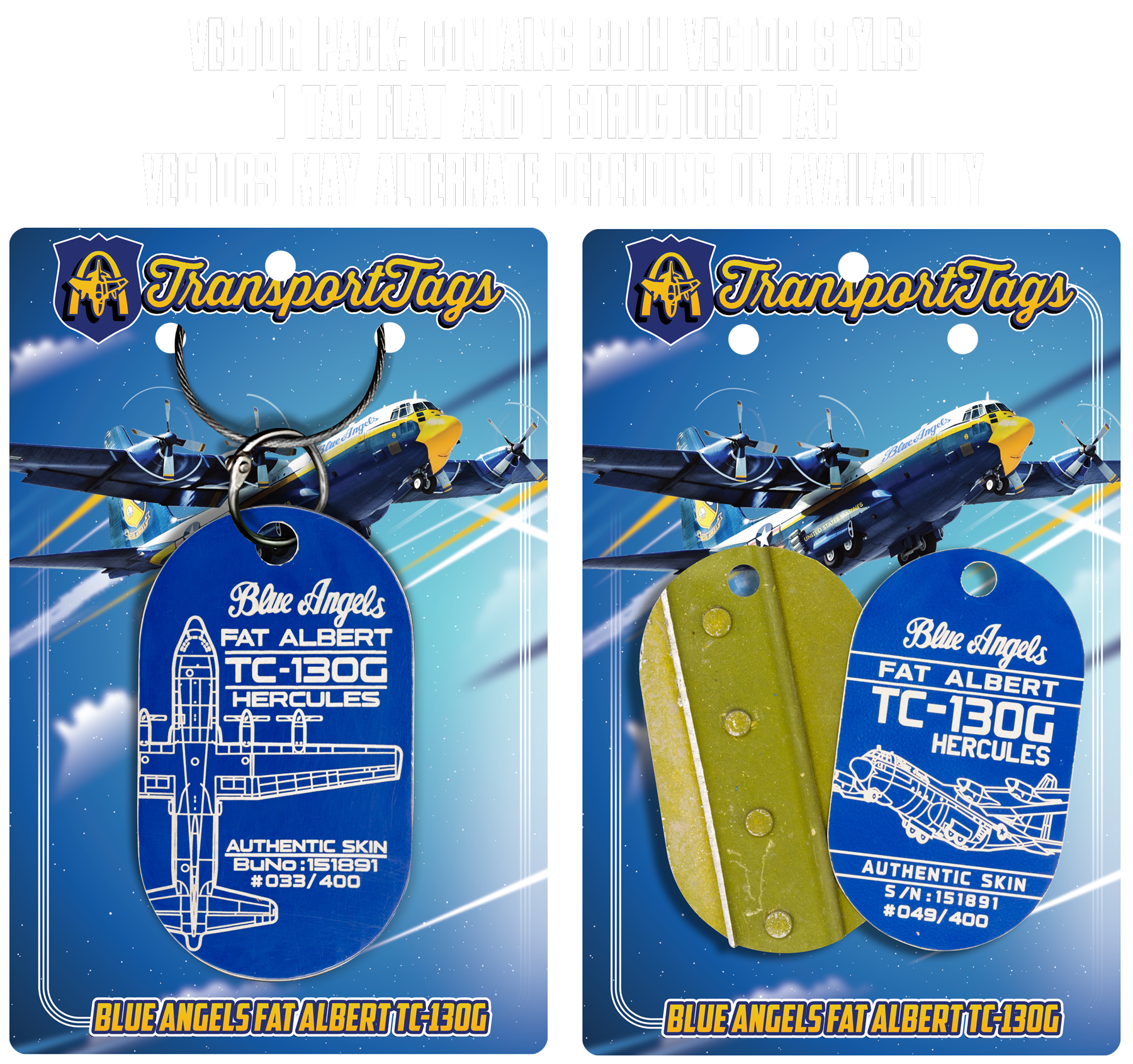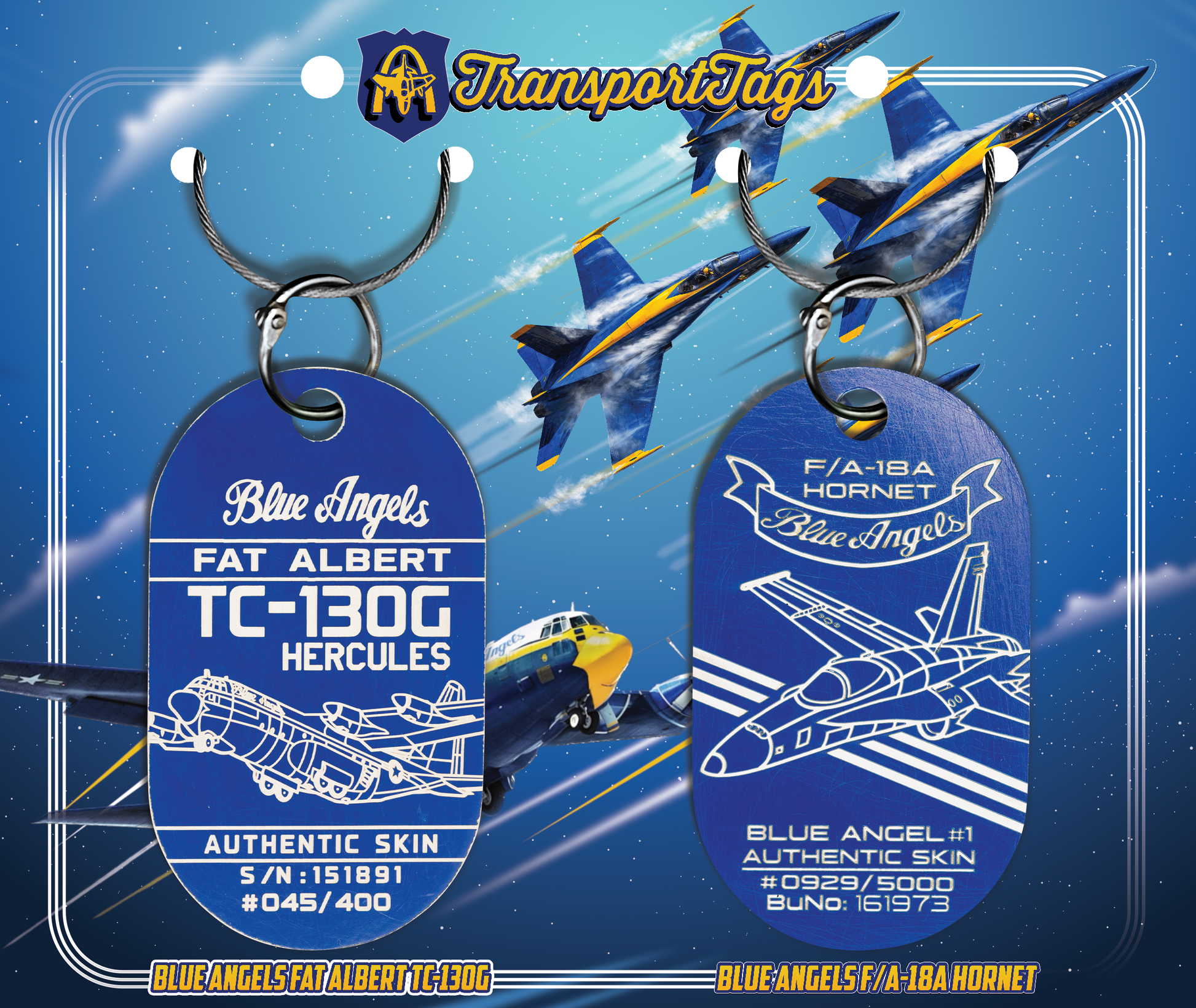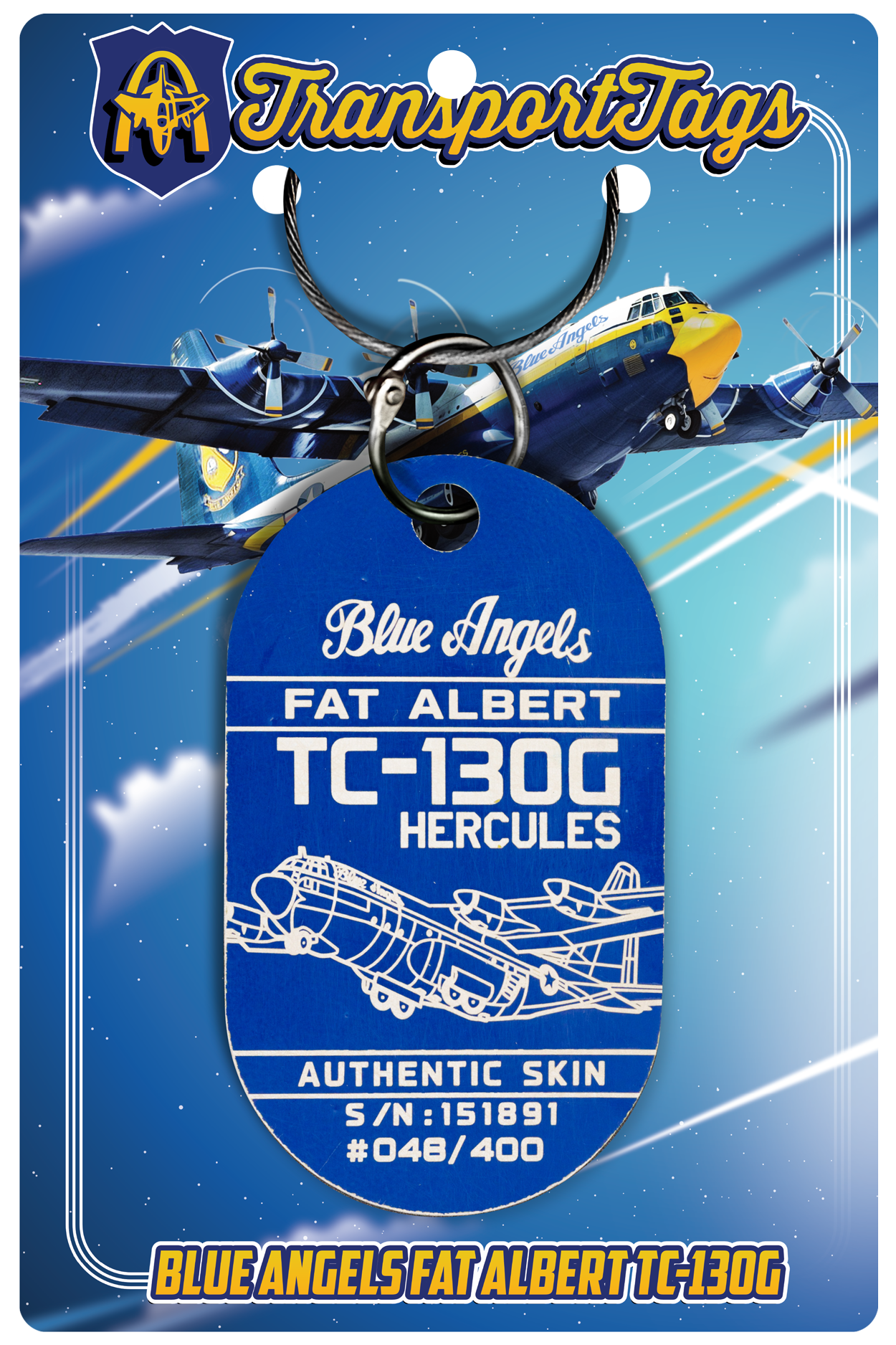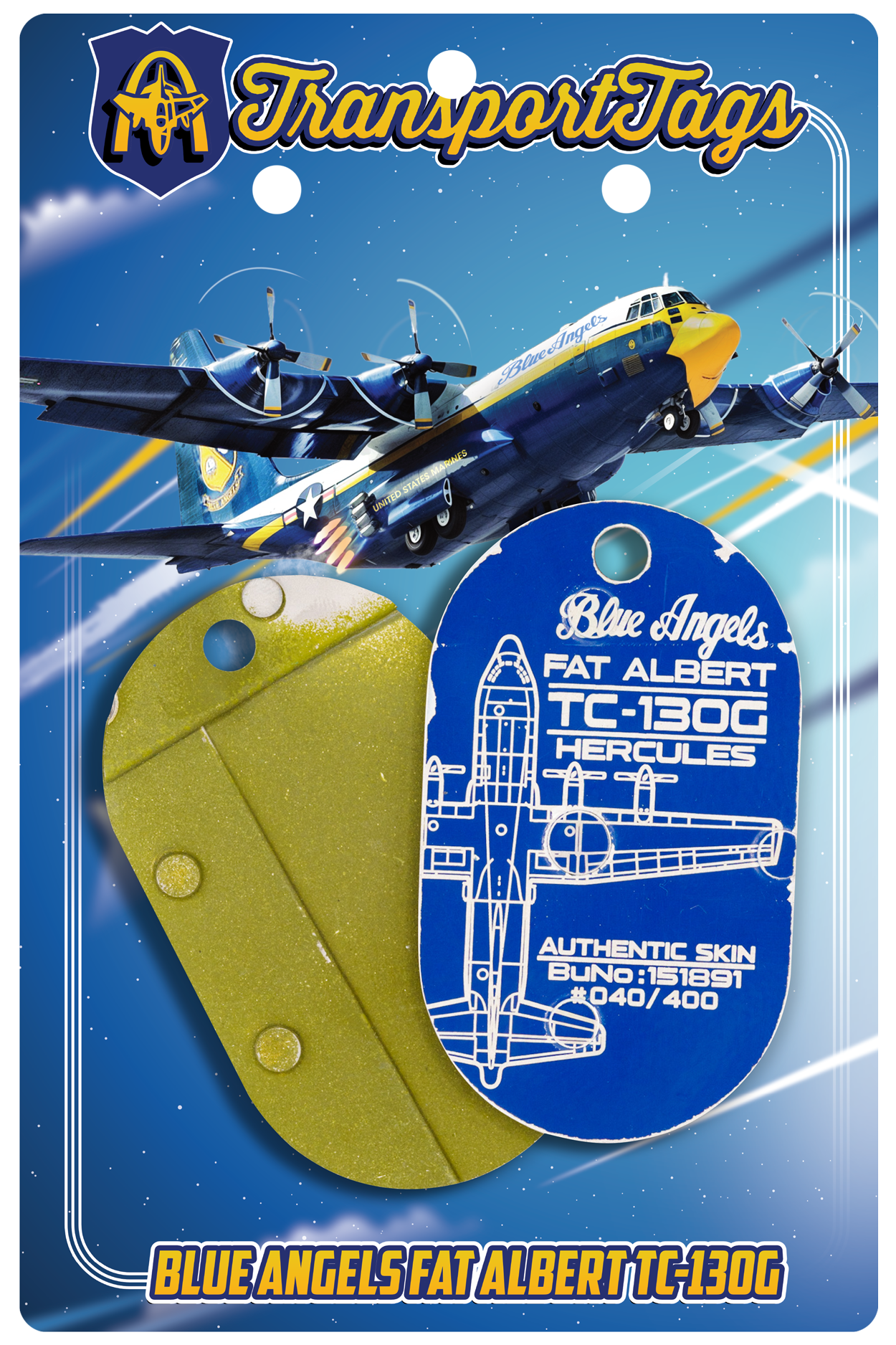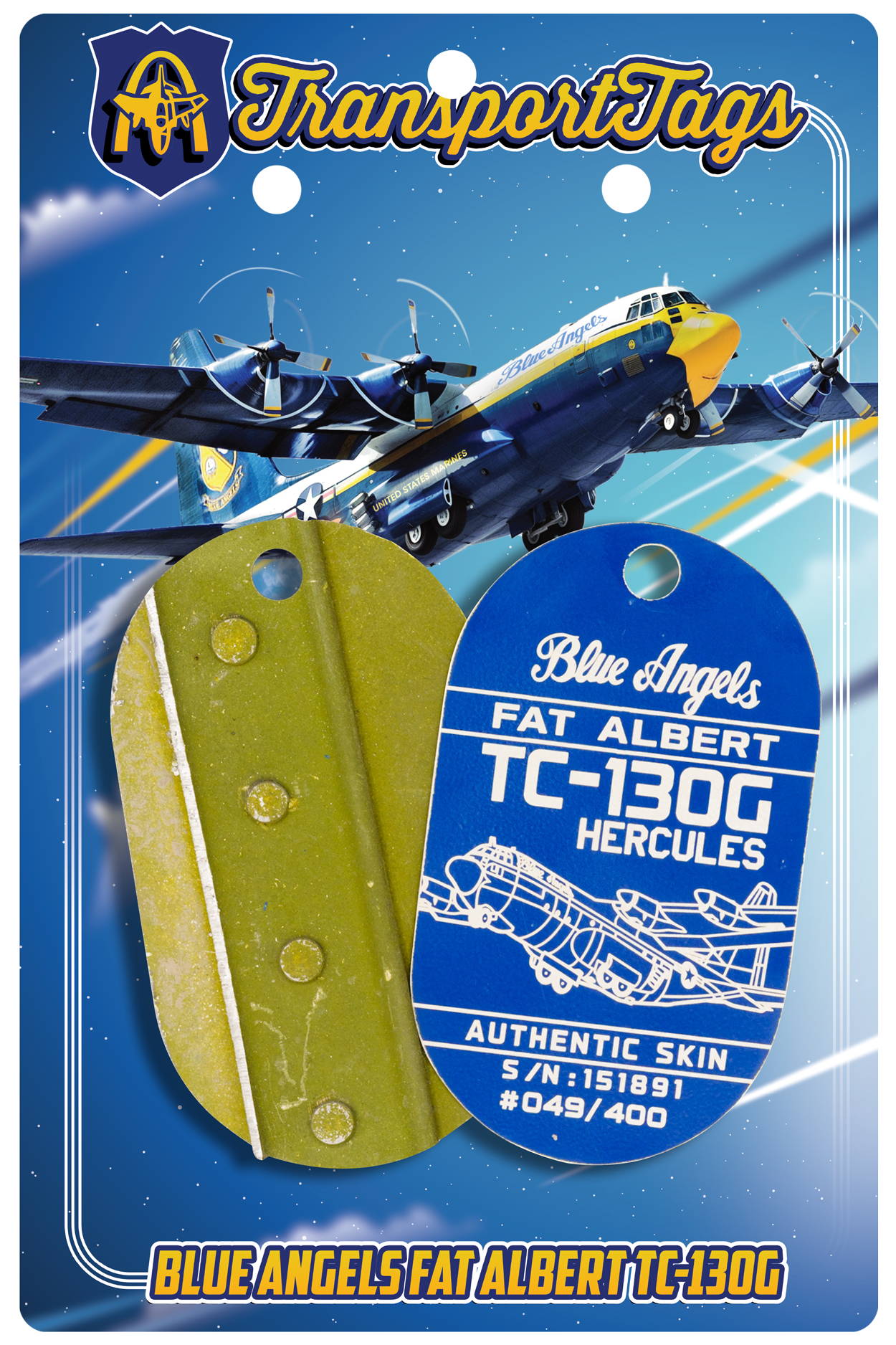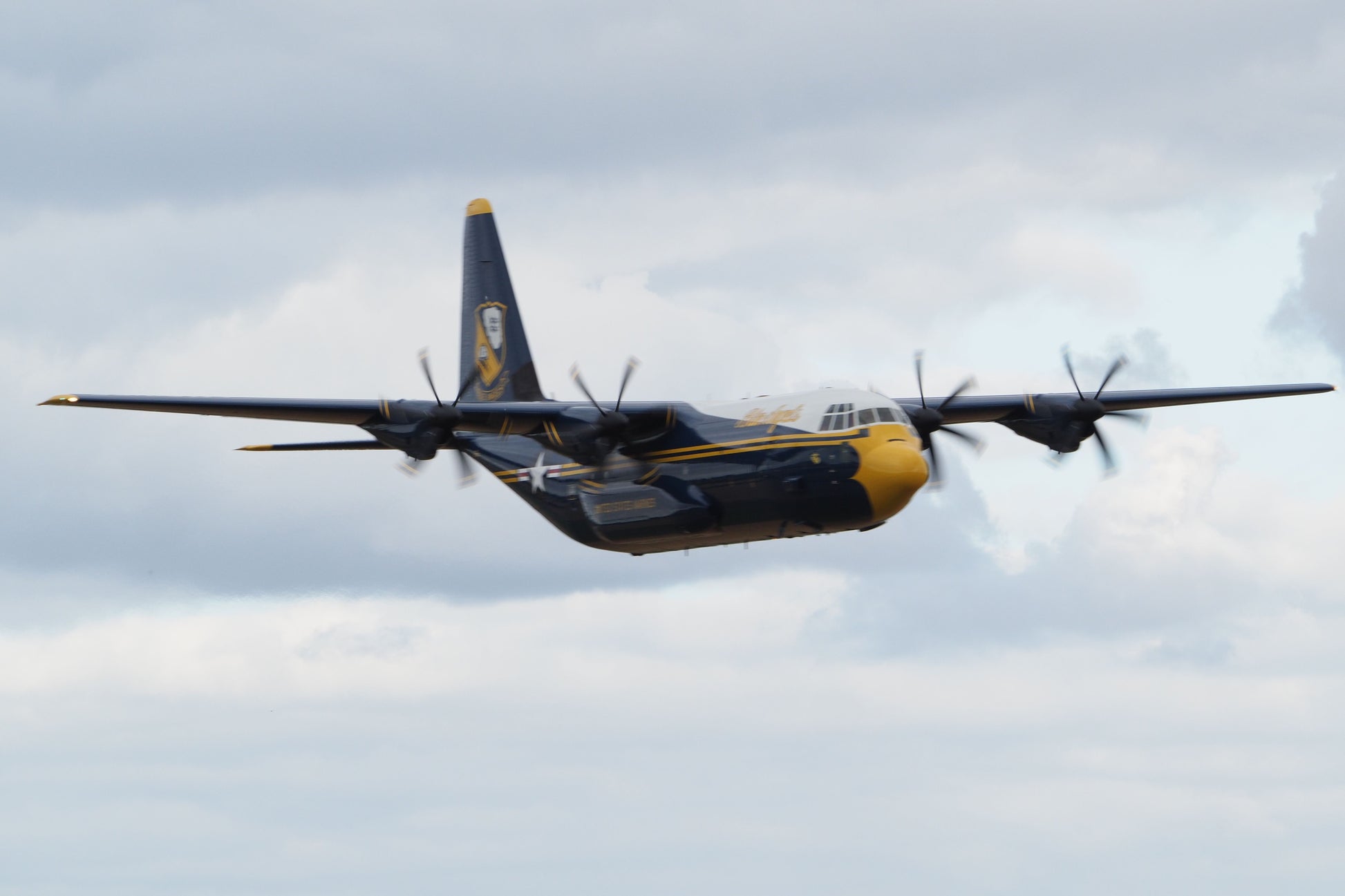Blue Angels Fat Albert C-130G
Blue Angels Fat Albert C-130G
Couldn't load pickup availability
As the first company to ever offer Blue Angels tags to the market, we are elated to present the second Blue Angels tag from the U.S. Navy - the Lockheed TC-130G Hercules (BUNO 151891), affectionately known as “Fat Albert“.

Our BuNo: 151891 Taking Off At An Airshow Credit: Ian Abbot
(Please note that Transport Tags LLC is NOT an authorized or licensed distributor of the Blue Angels, the U.S. Navy, or the Lockheed Aircraft Company, and uses their name, markings, etc., for identification purposes ONLY in accordance with the Lanham Act).

Initially assigned to VR-21 Det TACAMO in Barbers Point, HI, this aircraft played a vital role in “trash hauling” until the TACAMO II Vans arrived. On January 1, 1966, it was transferred to VW-1 in Guam. In 1964, Ron Carlson and his crew made history as the first Navy Hercules to fly around the world, carrying Arctic survival gear for an ambitious over-the-pole journey that ultimately didn’t materialize due to navigation challenges.
 This Fat Albert, the beloved Blue Angels logistics support aircraft from 1991 to 2002, famously put on an amazing show for spectators using its RATO (Rocket Assisted Takeoff) bottles to wow the audience. Fat Albert would have toured with our #1 Hornet as well, since our Hornet was part of the team from 1991 to 1993. Fat Albert was scrapped by the Navy after its retirement from the Pensacola National Naval Aviation Museum in 2020. We are thrilled that we were able to obtain a portion to create these tags in order to continue its amazing legacy! The Blue Angels now operate the C-130J model that was purchased from the UK Ministry of Defence by the US Navy and given to the Blue Angels.
This Fat Albert, the beloved Blue Angels logistics support aircraft from 1991 to 2002, famously put on an amazing show for spectators using its RATO (Rocket Assisted Takeoff) bottles to wow the audience. Fat Albert would have toured with our #1 Hornet as well, since our Hornet was part of the team from 1991 to 1993. Fat Albert was scrapped by the Navy after its retirement from the Pensacola National Naval Aviation Museum in 2020. We are thrilled that we were able to obtain a portion to create these tags in order to continue its amazing legacy! The Blue Angels now operate the C-130J model that was purchased from the UK Ministry of Defence by the US Navy and given to the Blue Angels.

Picture taken by Richard E. Flagg of the Current (2025) Fat Albert departing the UK after it was purchased by the Navy and assigned to the Blue Angels.
Vehicle History
Vehicle History
The Lockheed C-130 Hercules was conceived in the early 1950s to meet a U.S. Air Force requirement for a robust, versatile tactical transport aircraft capable of operating from short, unprepared airstrips. The aircraft was designed to replace older transport aircraft like the C-47 Skytrain and C-119 Flying Boxcar, offering greater payload, range, and reliability.

- Initial Development:
- Requirement Issued: In 1951, the U.S. Air Force issued a specification for a new transport aircraft capable of carrying troops, equipment, or vehicles, with short takeoff and landing (STOL) capabilities and the ability to operate in austere environments.
- Lockheed’s Proposal: Lockheed’s design team, led by Willis Hawkins, proposed a high-wing, four-engine turboprop aircraft with a rear cargo ramp, powered by Allison T56 turboprop engines. The design emphasized durability, versatility, and ease of maintenance.
- First Flight: The prototype YC-130A flew on August 23, 1954, from Lockheed’s facility in Burbank, California. The aircraft demonstrated exceptional performance, leading to production approval.
- Production and Variants: The C-130A entered service in 1956, and the C-130B, with improved engines and range, followed in 1959. The C-130E, introduced in 1962, featured enhanced range and payload, becoming a baseline for later variants like the C-130G.
- C-130G Variant:
- The C-130G was a specialized version developed for the U.S. Navy, based on the C-130E but tailored for maritime and communication roles. It featured minor modifications, such as strengthened airframes and specialized avionics, to support Navy-specific missions.
- The C-130G served as the foundation for the EC-130G, which was further modified for the TACAMO mission.
Development of the EC-130G (Precursor to TC-130G)
The TC-130G originated as the EC-130G, a highly specialized variant developed for the U.S. Navy’s TACAMO program, designed to provide survivable, secure communications between the National Command Authority and nuclear-armed submarines.
-
TACAMO Mission:
- Early 1960s: The Navy contracted Lockheed to modify C-130G airframes into EC-130Gs. The first EC-130Gs were delivered to Fleet Air Reconnaissance Squadrons (VQ-3 and VQ-4) starting in 1963.
- Modifications: The EC-130G featured:
- VLF radio systems with a dual trailing wire antenna system for low-frequency communication.
- Reinforced airframes to handle the stress of low-altitude, high-speed orbits required for VLF transmission.
- Specialized avionics and crew stations for communications operators.
- Removal of the rear cargo ramp in some configurations to accommodate TACAMO equipment.
- Operational Use: EC-130Gs were deployed with VQ-3 (based at NAS Barbers Point, Hawaii, and later NAS Patuxent River, Maryland) and VQ-4. They operated during the Cold War, ensuring continuous communication with the Navy’s submarine fleet.
- Purpose: Initiated in the 1960s, the TACAMO (Take Charge and Move Out) mission required an aircraft capable of very low frequency (VLF) radio communications to maintain contact with submerged ballistic missile submarines, ensuring command and control during nuclear scenarios.
- Selection of C-130: The C-130 was chosen for its reliability, long loiter time, and ability to operate from varied airfields. Its spacious cargo bay allowed for the installation of bulky VLF equipment, including trailing wire antennas up to 5 miles long.
- Performance Characteristics:
- The EC-130G retained the core capabilities of the C-130G, including a maximum payload of ~42,000 pounds, a range of ~2,360 miles, and the ability to operate from short runways.
- Its TACAMO role required extended loiter times, often involving low-altitude orbits to deploy the trailing wire antenna, which demanded robust airframe and engine performance.

Transition to TC-130G
The TC-130G designation emerged when certain EC-130G airframes were repurposed from their TACAMO role to serve as training and support aircraft, most notably for the U.S. Navy’s Blue Angels flight demonstration team.

-
Redesignation and Role Change:
- “Fat Albert” Role: From 1991 to 2002, the TC-130G (BuNo 151891) served as the Blue Angels’ support aircraft, nicknamed “Fat Albert.” It was used for:
- Transporting personnel, equipment, and spare parts to air show locations.
- Performing flyovers and demonstrations, showcasing the C-130’s STOL capabilities.
- Conducting flight proficiency training for Navy pilots.
- Unique Features: The TC-130G lacked the rear cargo ramp due to its earlier TACAMO modifications, which limited its cargo versatility compared to standard C-130s. It was painted in the Blue Angels’ distinctive blue-and-yellow livery.
- Performance: The aircraft retained the C-130G’s four Allison T56-A-16 turboprop engines (4,910 shp each), with a maximum speed of ~366 mph and a range of ~2,360 miles. It could carry up to 92 passengers or equivalent cargo for Blue Angels logistics.
- Background: By the late 1980s and early 1990s, the Navy began transitioning TACAMO missions to the Boeing E-6 Mercury, a more modern platform based on the 707 airframe. This allowed some EC-130G airframes to be repurposed.
- TC-130G Conversion: One specific EC-130G (BuNo 151891), originally operated by VQ-3, was redesignated TC-130G in the early 1990s. It was modified for training and logistical support, stripping out much of the TACAMO-specific equipment but retaining the C-130’s core transport capabilities.
- Blue Angels Service:
- Retirement:
- The TC-130G was retired from Blue Angels service in November 2002, replaced by a C-130T (a later Hercules variant).
- The aircraft (BuNo 151891) was preserved and placed on static display at the National Museum of Naval Aviation in Pensacola, Florida, where it remains in Blue Angels colors.
Development Challenges and Innovations
- Challenges:
- TACAMO Modifications: Adapting the C-130G for the EC-130G required significant engineering to integrate VLF systems, including managing the aerodynamic and structural stresses of trailing wire antennas during flight.
- Aging Airframes: By the time the EC-130G became the TC-130G, the airframe had seen decades of service, requiring extensive maintenance to ensure reliability for Blue Angels operations.
- Limited Cargo Capability: The absence of a rear cargo ramp in the TC-130G (due to TACAMO modifications) restricted its utility compared to other C-130 variants, making it less versatile for standard transport missions.
- Innovations:
- Versatility of the C-130 Platform: The C-130’s modular design allowed it to be adapted for diverse roles, from TACAMO communications to Blue Angels support, demonstrating its adaptability.
- TACAMO Technology: The EC-130G’s VLF systems were a significant technological achievement, enabling reliable communication with submerged submarines, a critical capability during the Cold War.
- Public Engagement: The TC-130G’s role as “Fat Albert” highlighted the C-130’s capabilities to the public, showcasing its STOL performance and reinforcing the Navy’s aviation prowess.
Broader Impact and Legacy
- C-130 Program Longevity: The C-130 Hercules remains one of the longest-serving military aircraft, with over 2,600 built across more than 70 variants. The TC-130G’s history reflects the platform’s ability to evolve for niche roles.
- TACAMO Evolution: The EC-130G’s role in TACAMO paved the way for the E-6 Mercury, which continues the mission today. The TC-130G’s transition to a support role extended its service life and visibility.
- Blue Angels Contribution: The TC-130G’s tenure as “Fat Albert” from 1991 to 2002 made it an iconic part of the Blue Angels’ performances, endearing the C-130 to audiences and demonstrating its rugged reliability.
Product Specifics
Product Specifics
Multiple variants available. Tag back will be blank unless customization is requested at checkout.
** On the Homecoming Dual Card tag packs most will ship with the flat blue tags, but some may be honeycomb or carbon variants for the Hornet.
Vehicle Stats
Vehicle Stats

WINGSPAN: 152 Feet (40.2 METERS)
LENGTH: 97 FEET 9 INCHES (29.3 METERS)
ENGINE: 4X ALLISON T-56-A-7 TURBOPROPS
TOP SPEED: 357MPH/575KMH (MACH .47)
CEILING: 33.000FT EMPTY (10.060 M)
RATE OF CLIMB: 50,000 FT/MIN (250M/S)
G LIMIT: 2.5
Product Dimensions
Product Dimensions
Card Dimensions
Length: 5 1/2"
Width: 3 1/2"
Tag Dimensions
Length: 3"
Width: 1.75"
Thickness:
Regular Tags: 1.3mm - 6.8mm
Thick Tags: 9.1mm - 10.5mm
* Special Edition Homecoming Dual Card Pack Tag Card: 6.5“ x 5.5“
Disclaimer
Disclaimer
TransportTags are unique, handcrafted pieces made from genuine vehicle skin. Features like scratches, blemishes, or minor discolorations testify to their unique vintage appeal and authenticity. By purchasing, you accept the product may differ slightly from website images. Transport Tags LLC uses authentic material from transportation vehicles, potential containing hazardous substances. Not intended for ingestion, inhalation, or use by small children. Transport Tags LLC is an independent company, not affiliated with, sponsored or endorsed by any entities. We use branded names and insignia for identification under the provisions of the Lanham Act, without implying any association or endorsement. For more information, read our detailed product safety and legal information here.
Share
